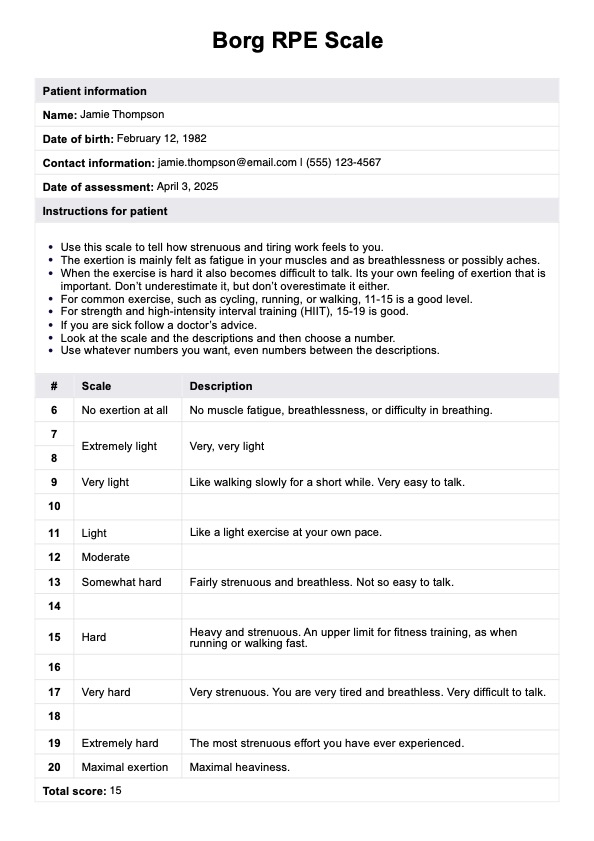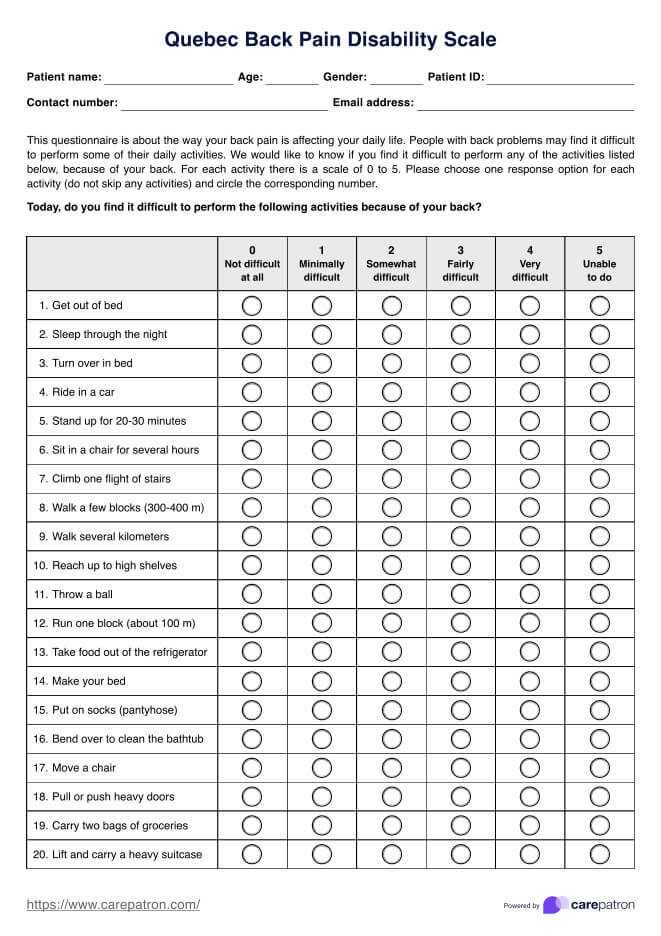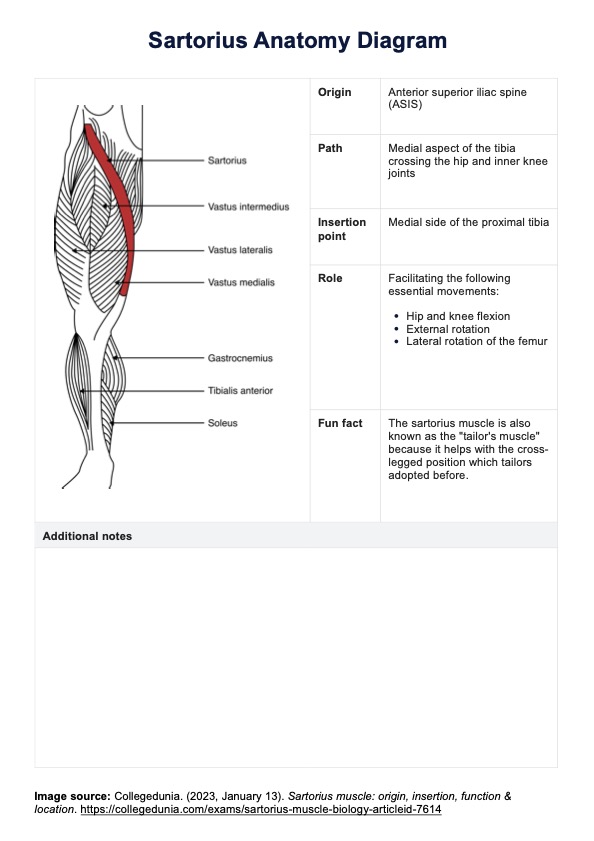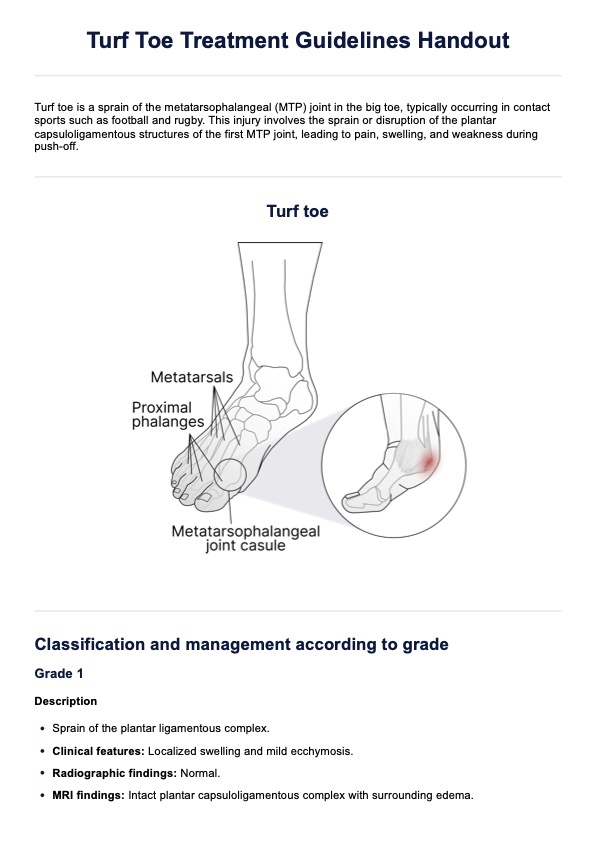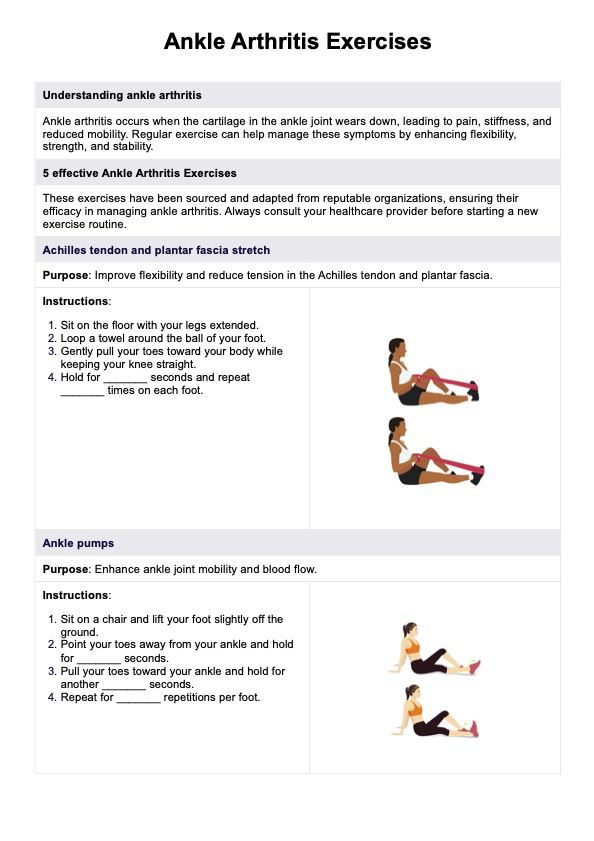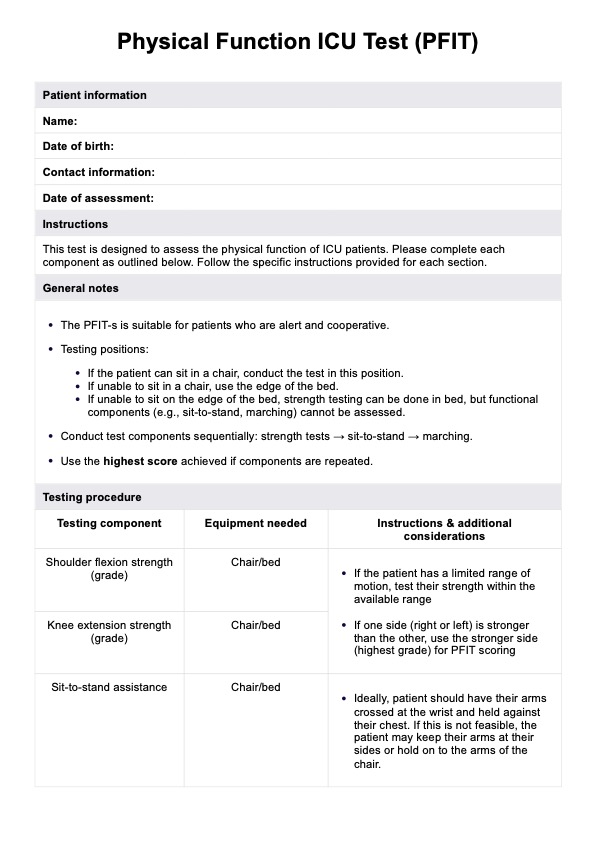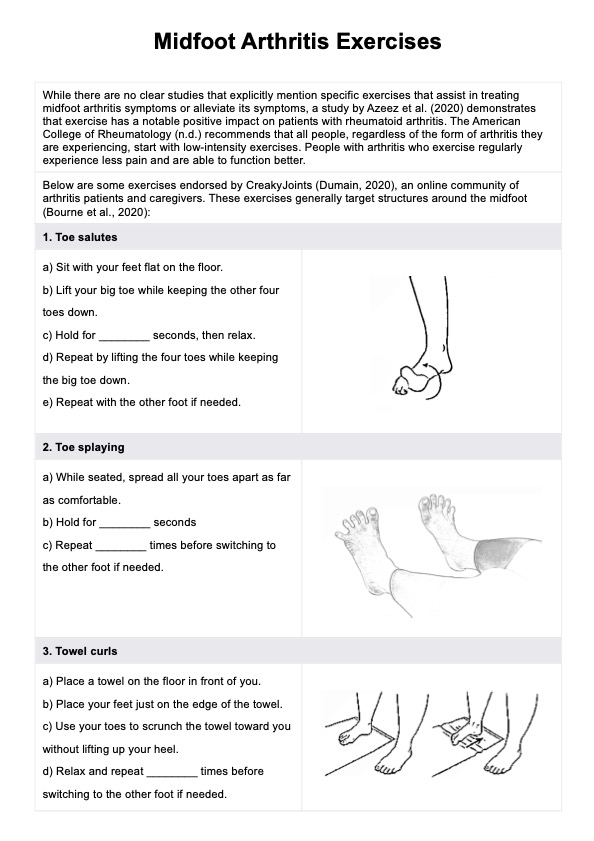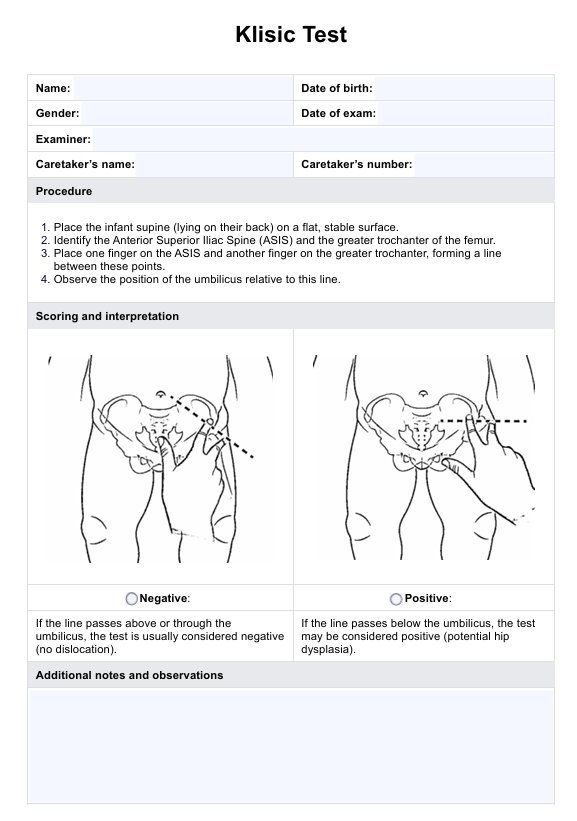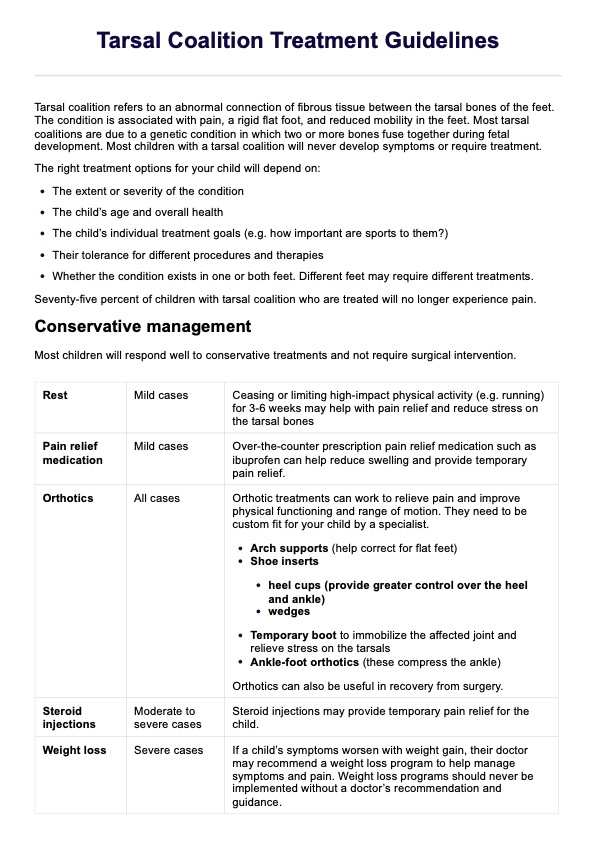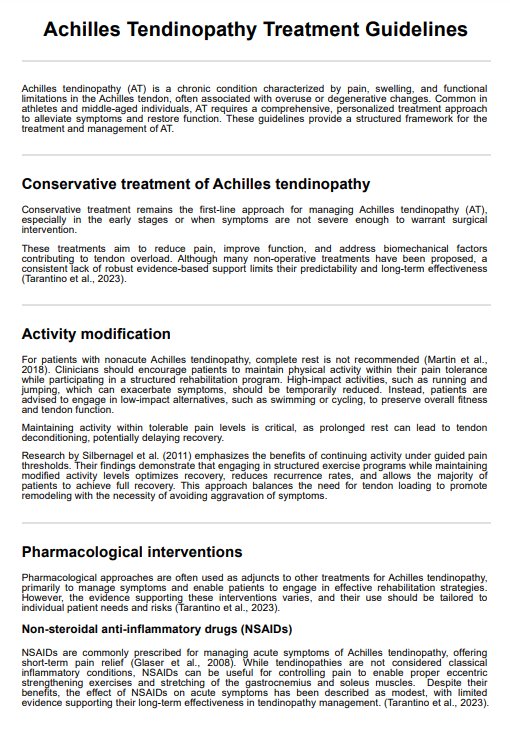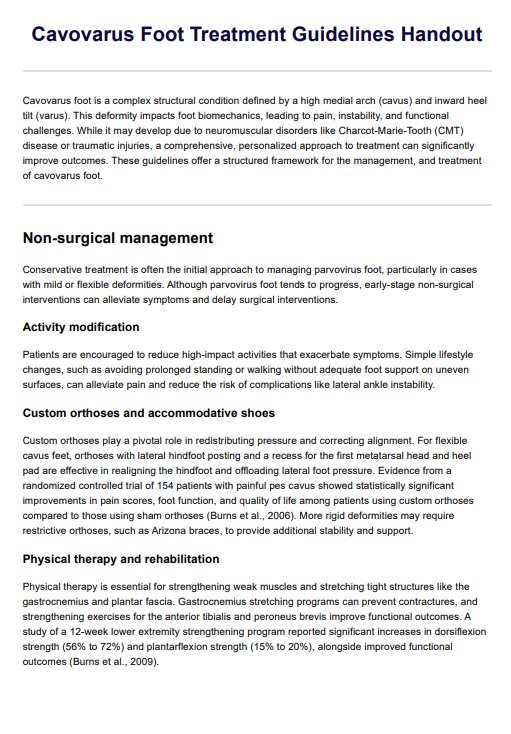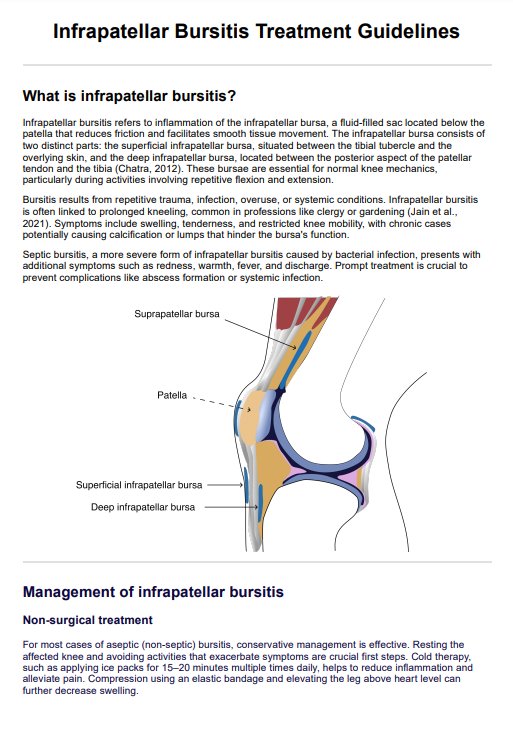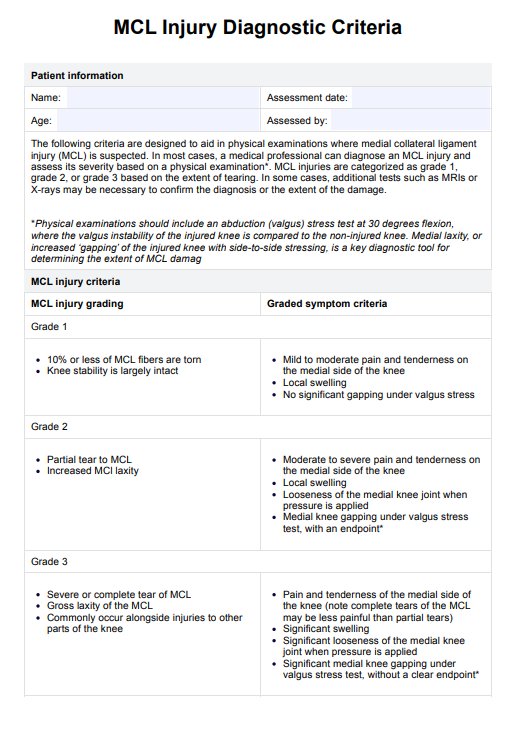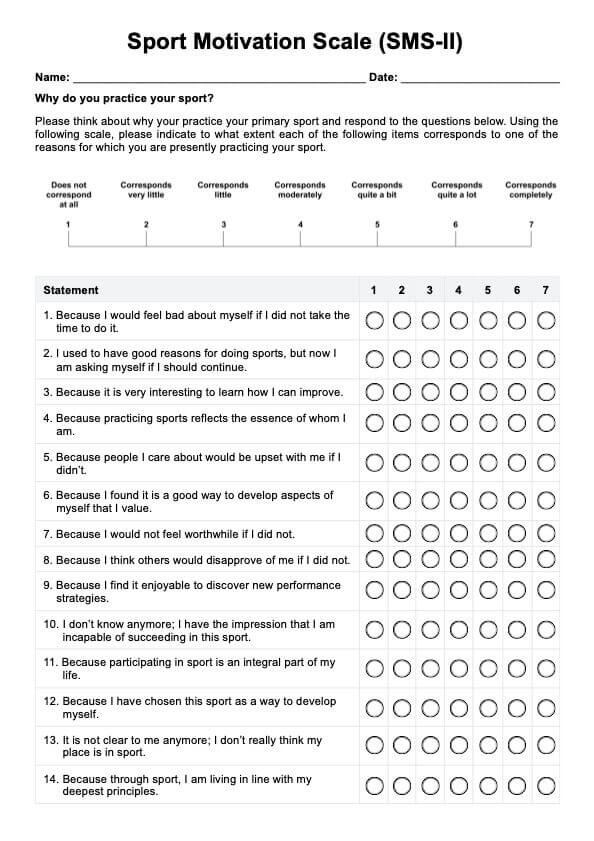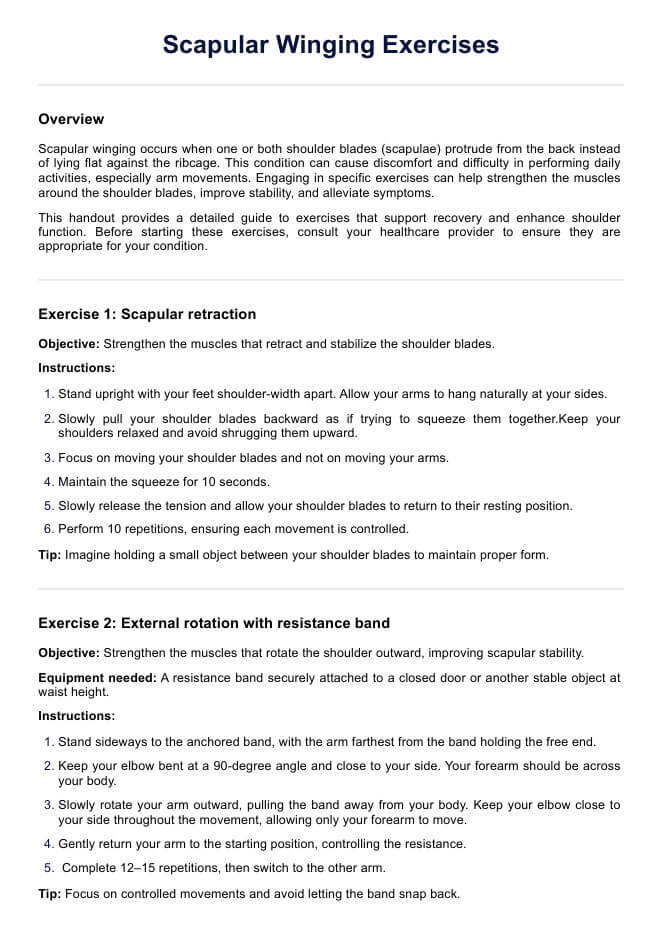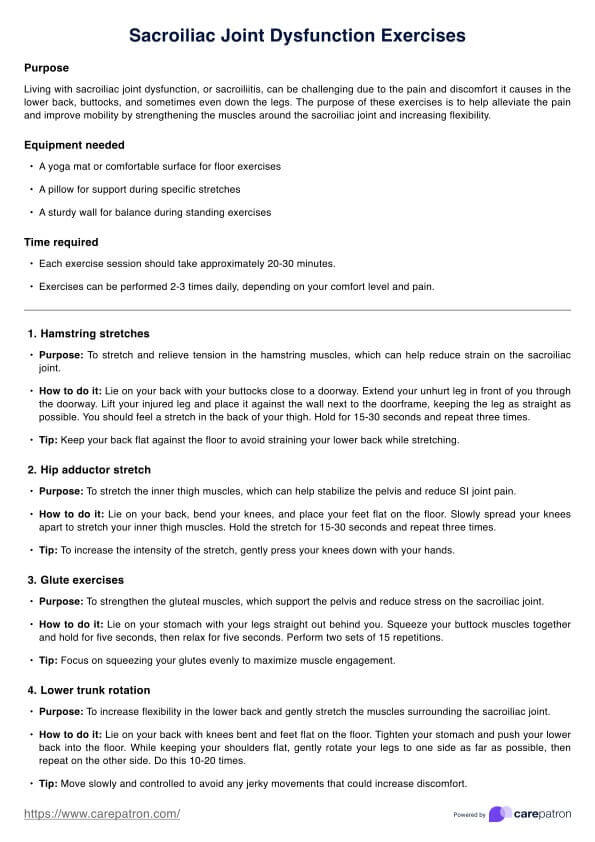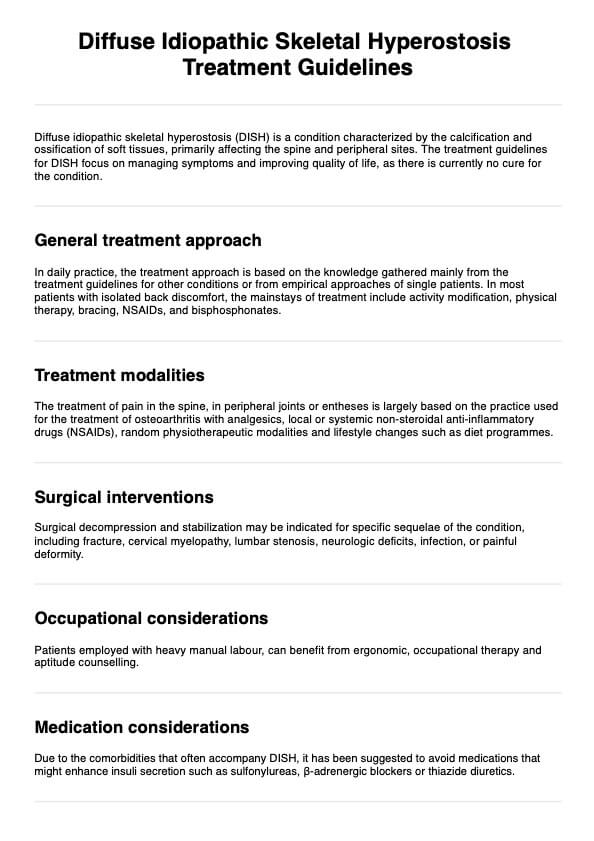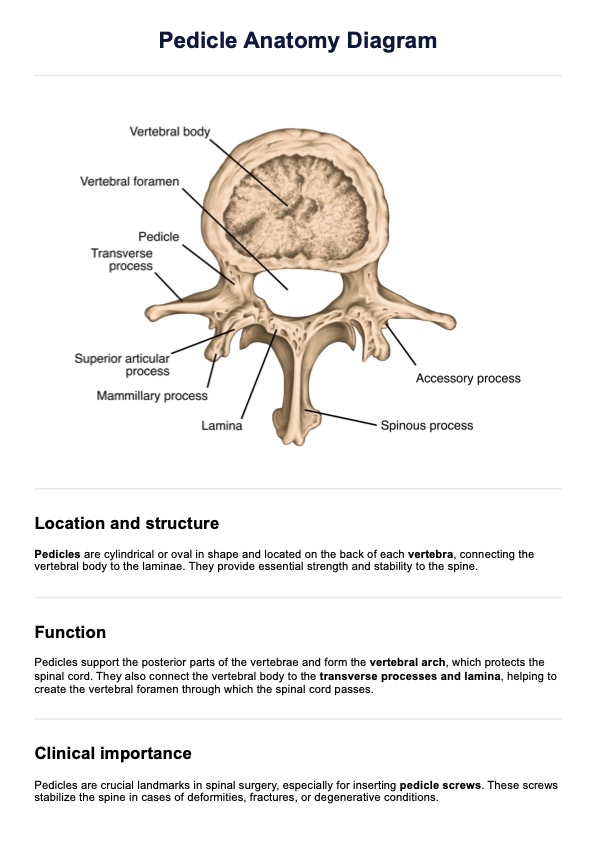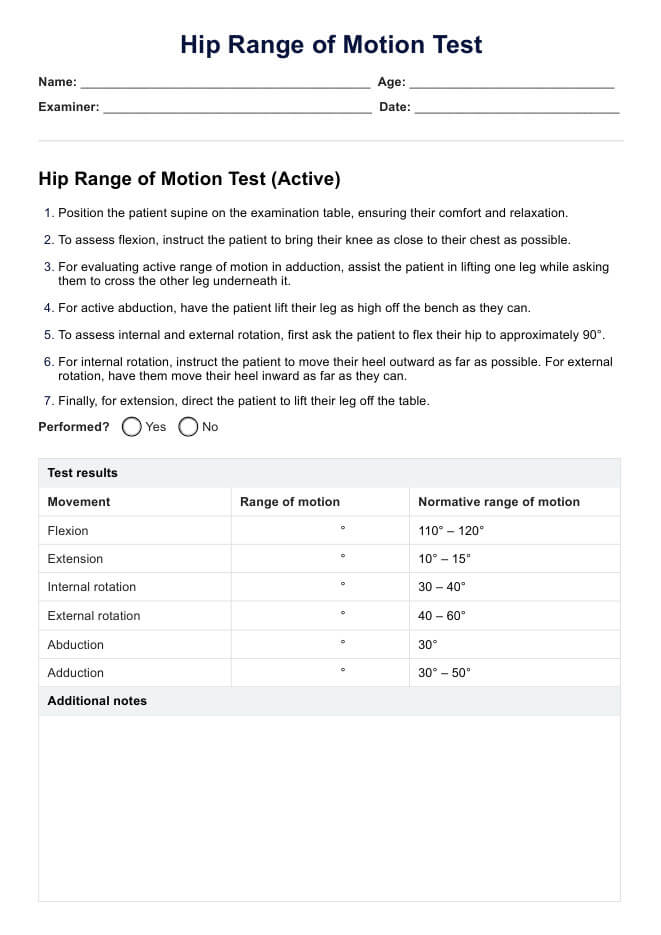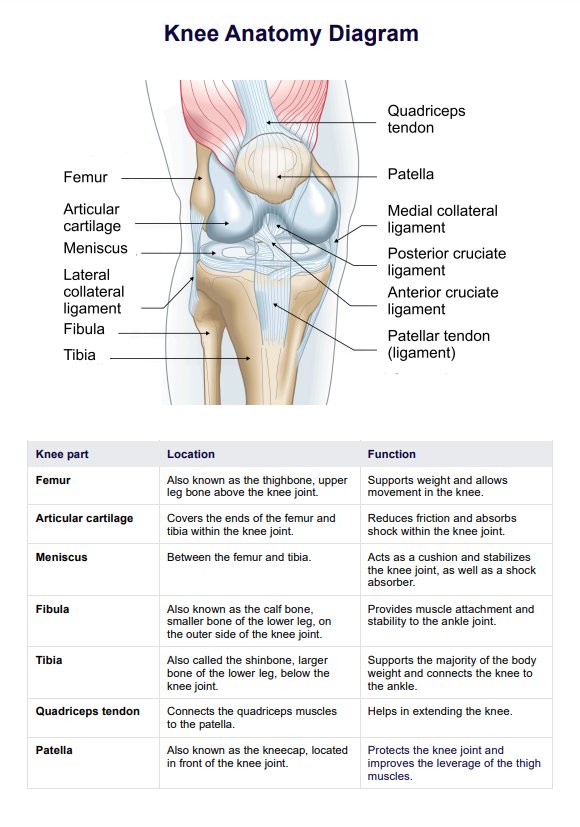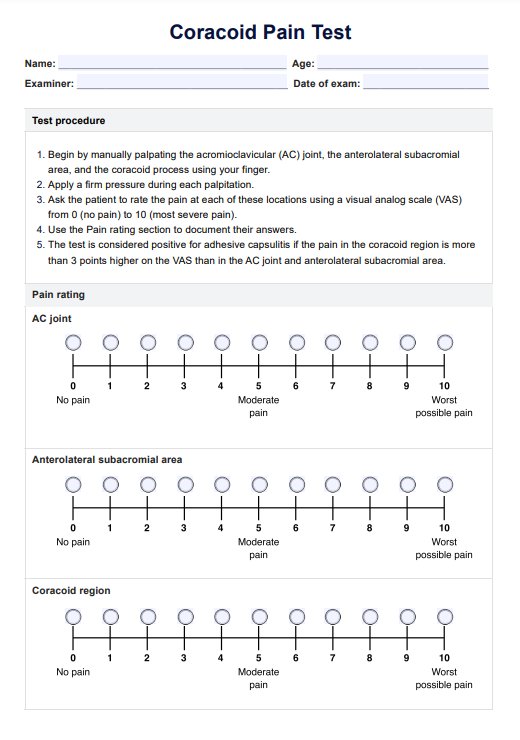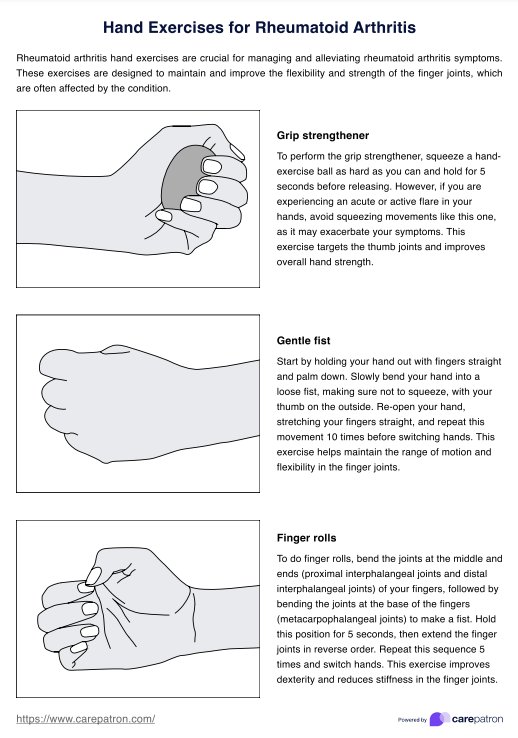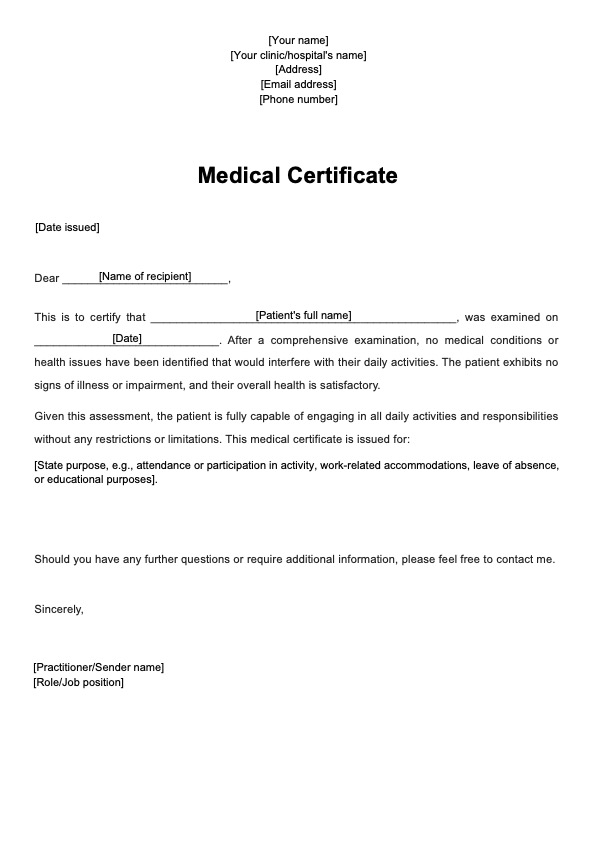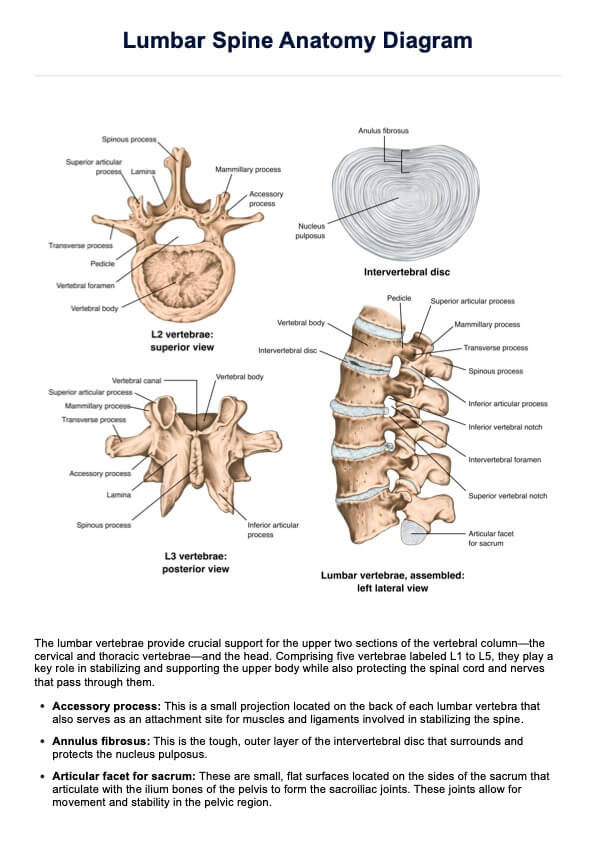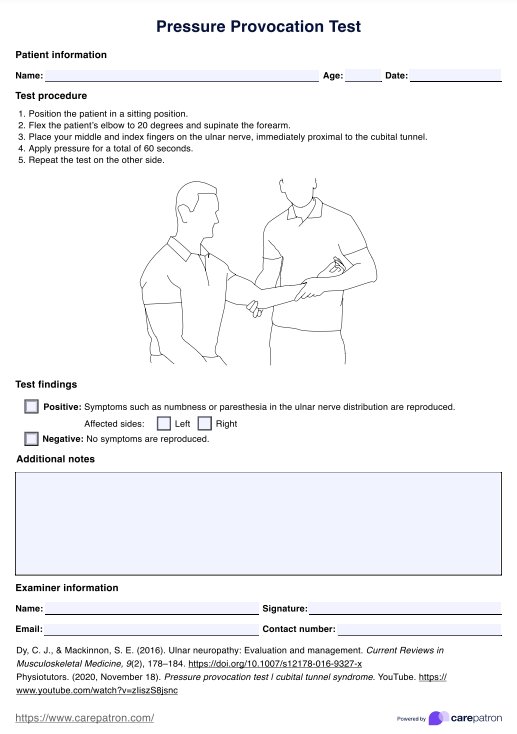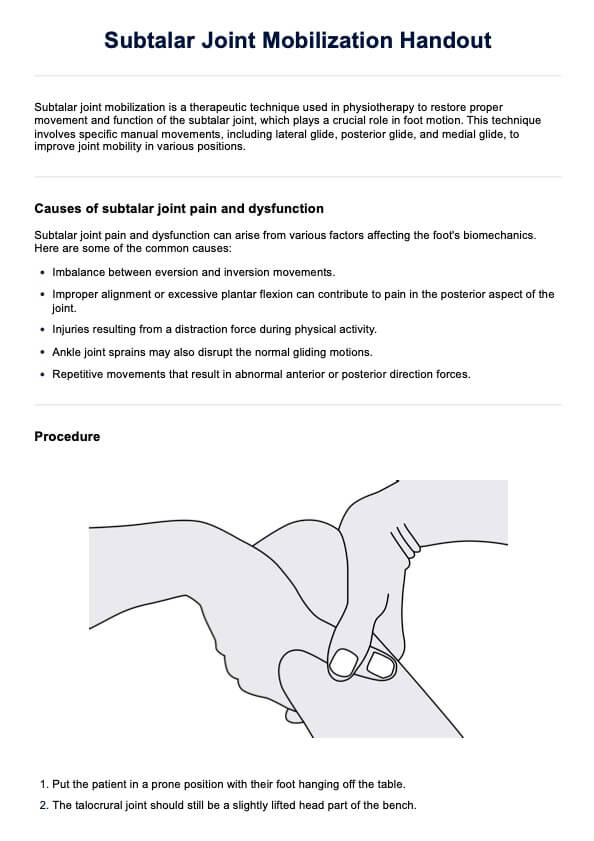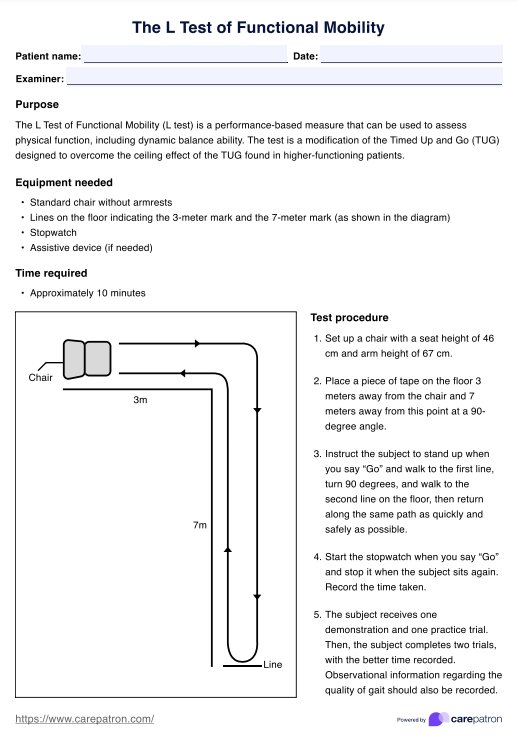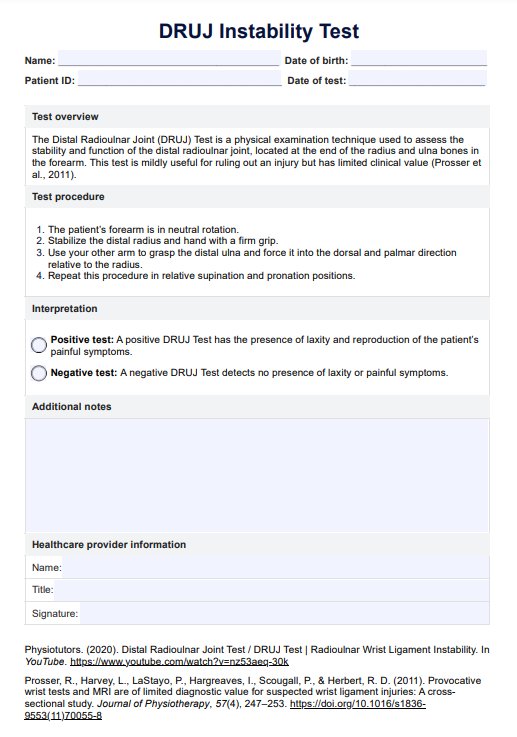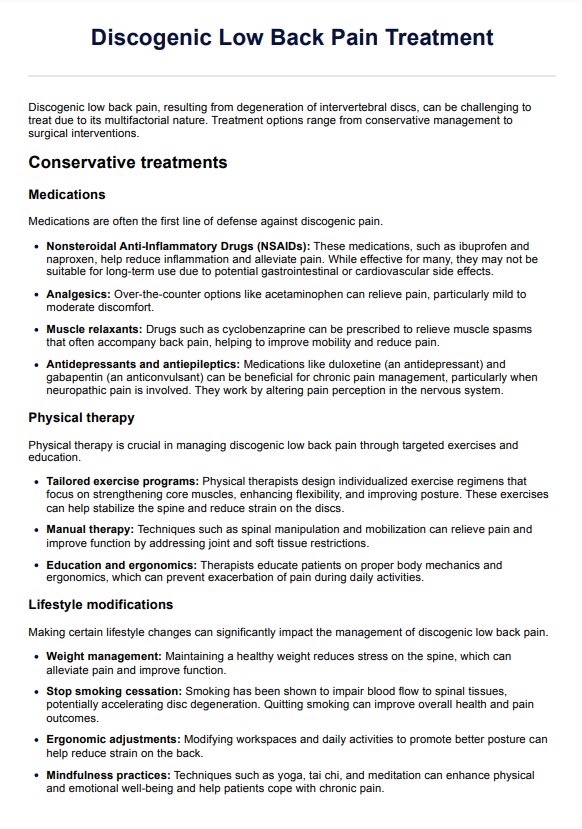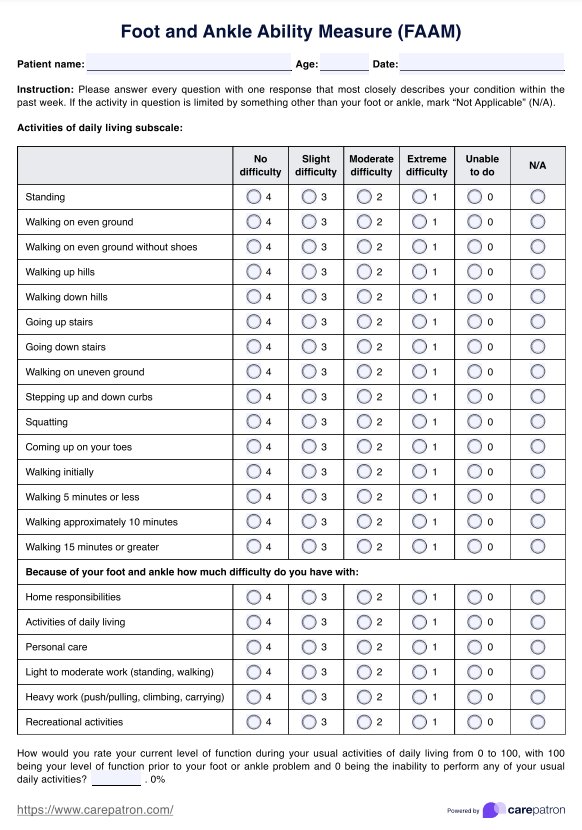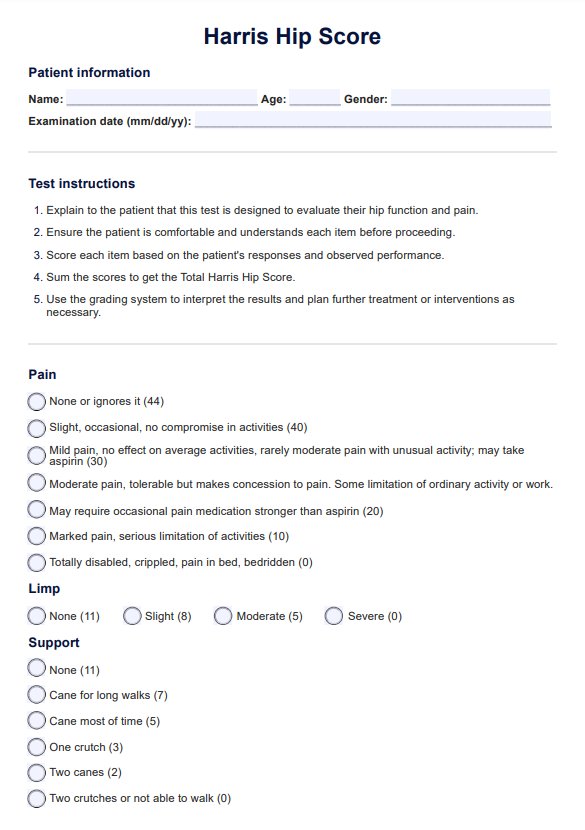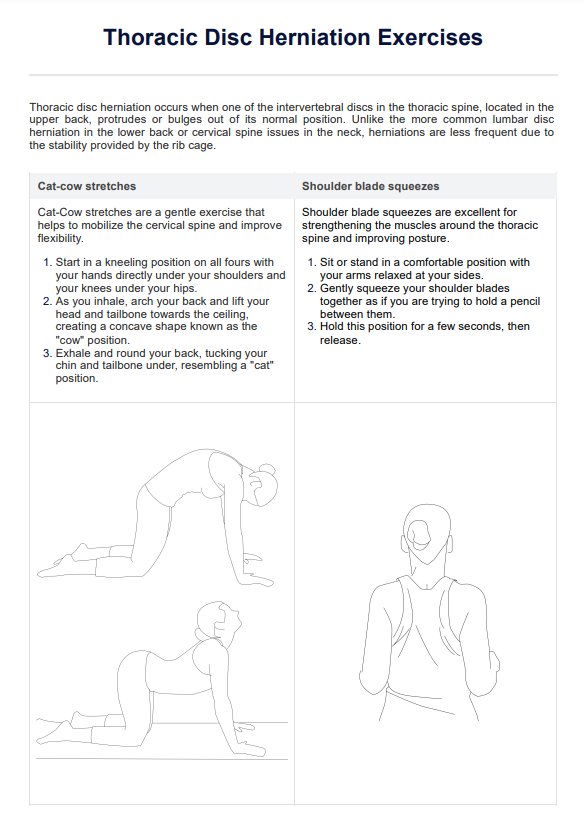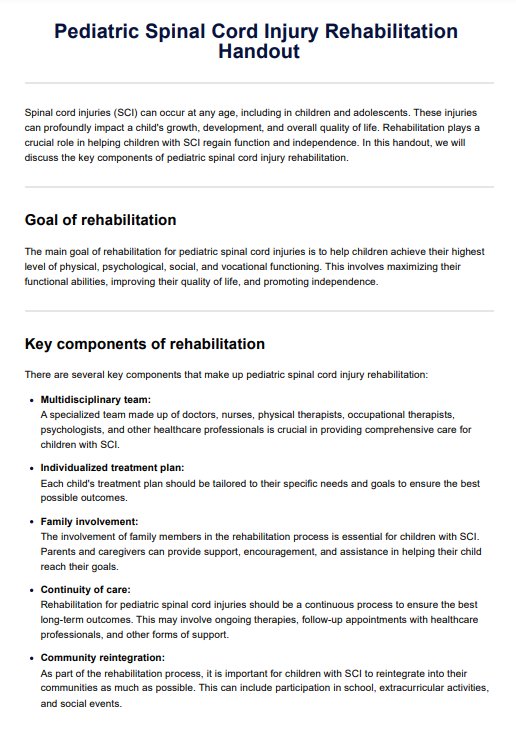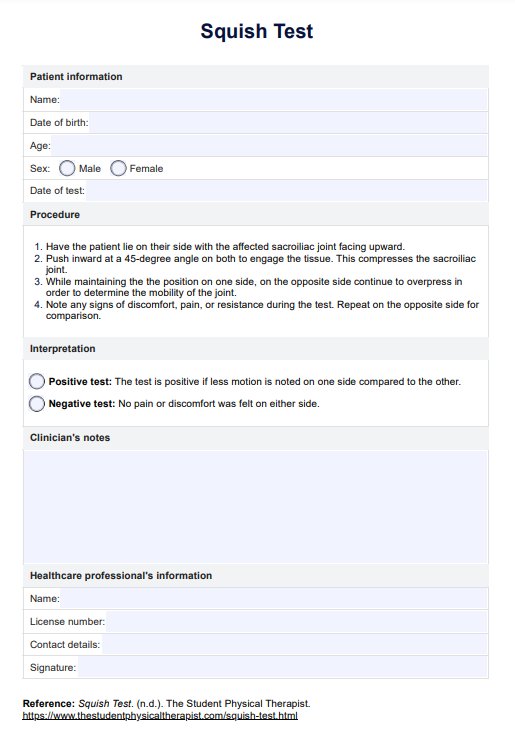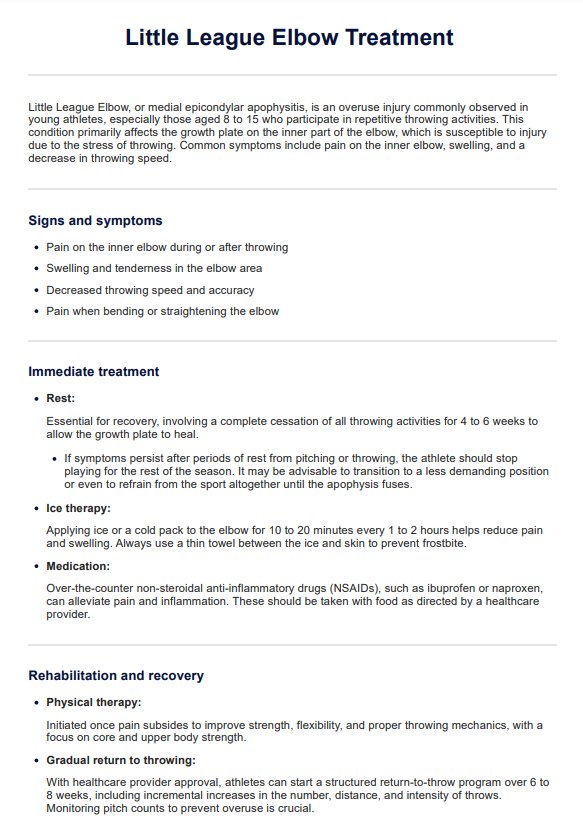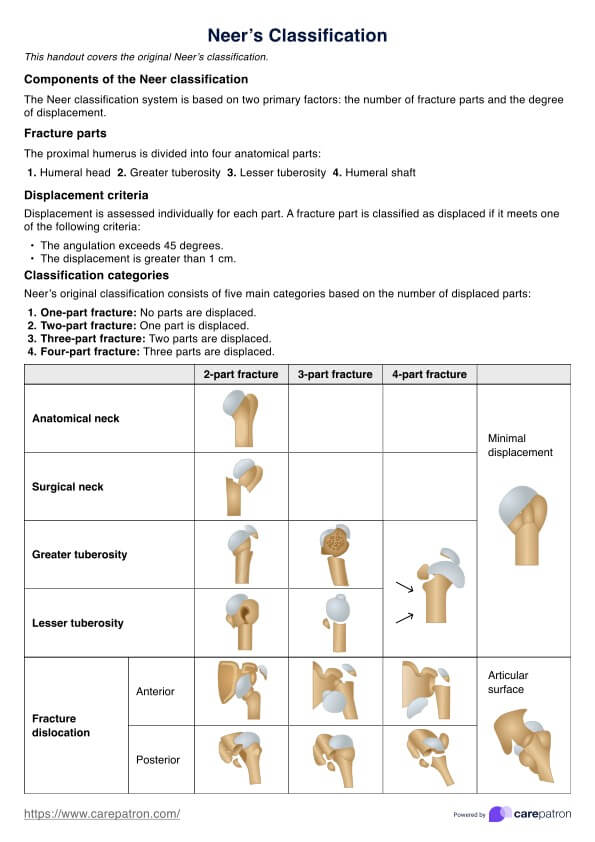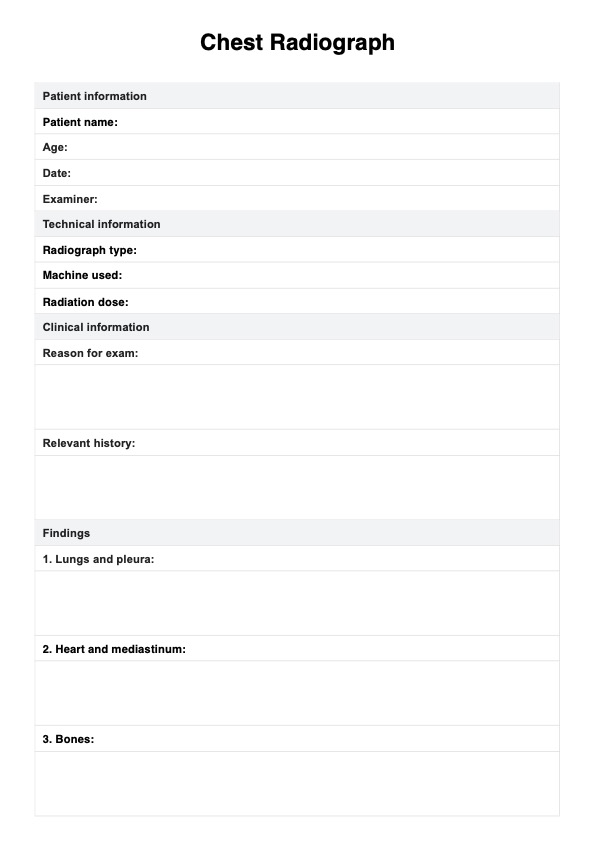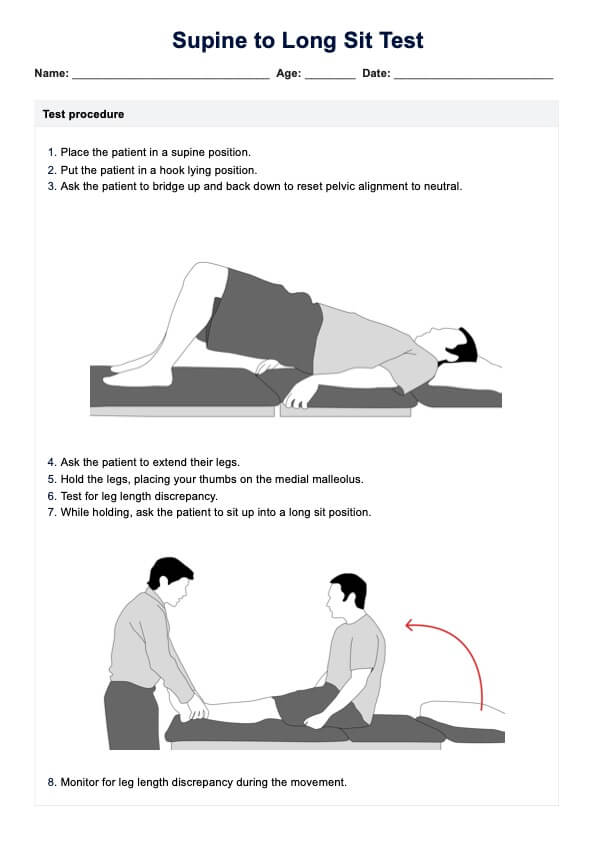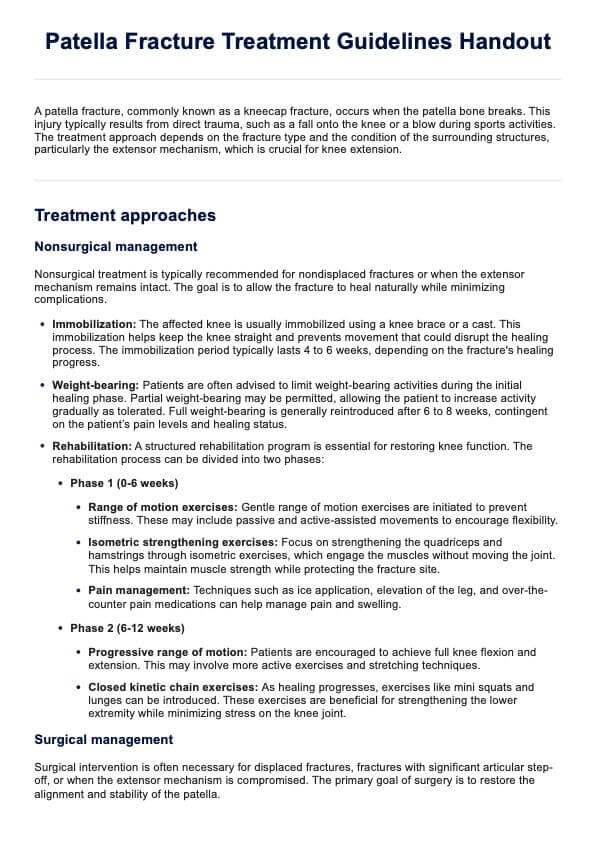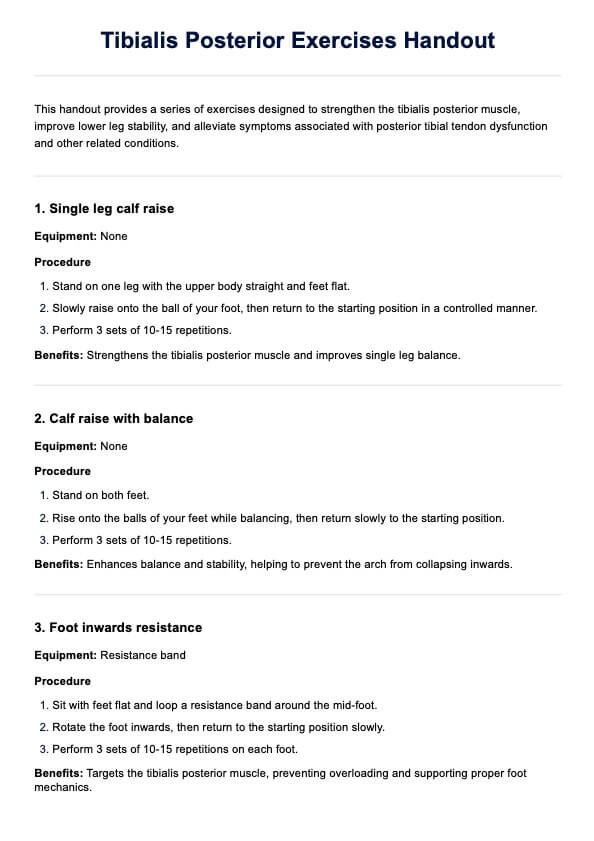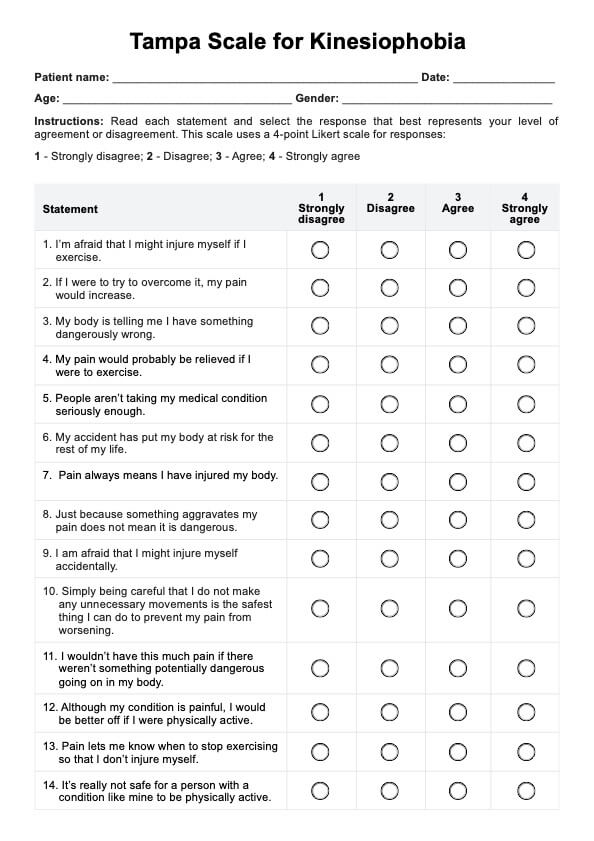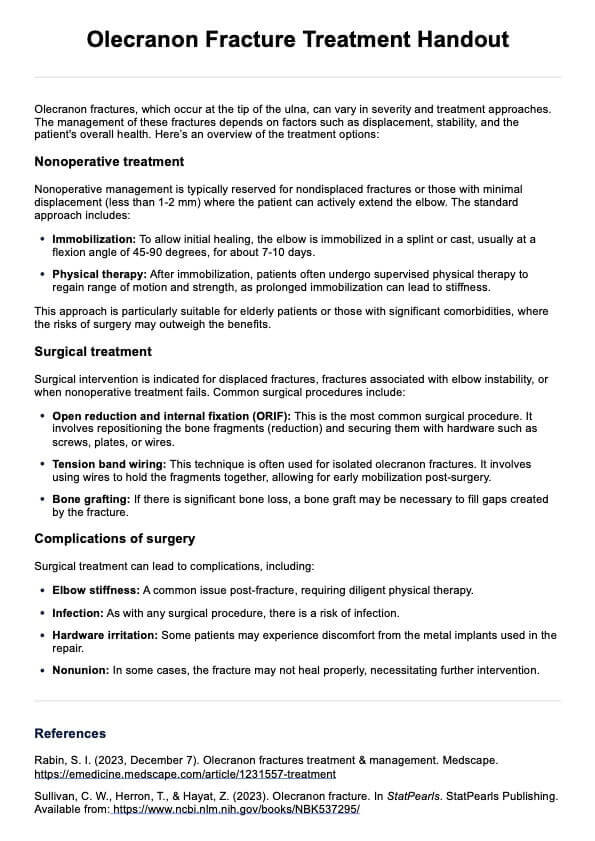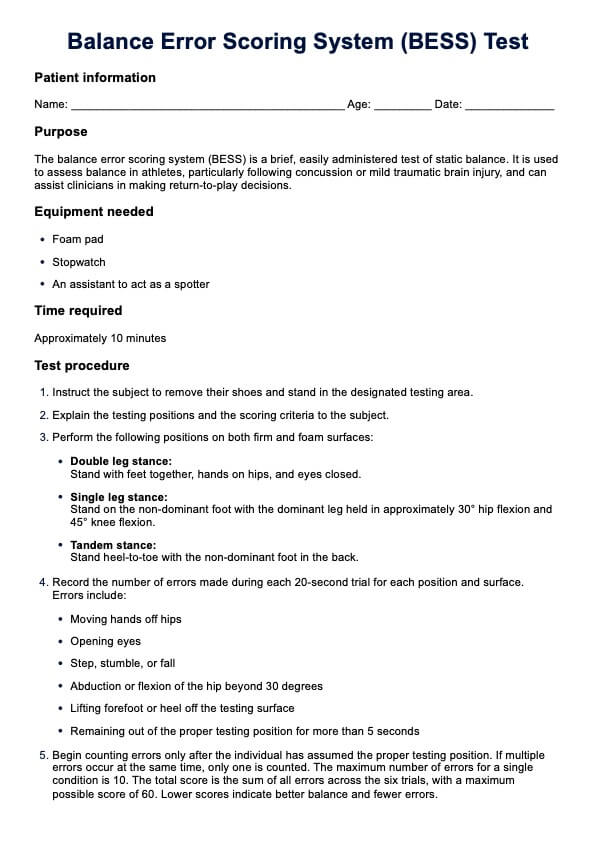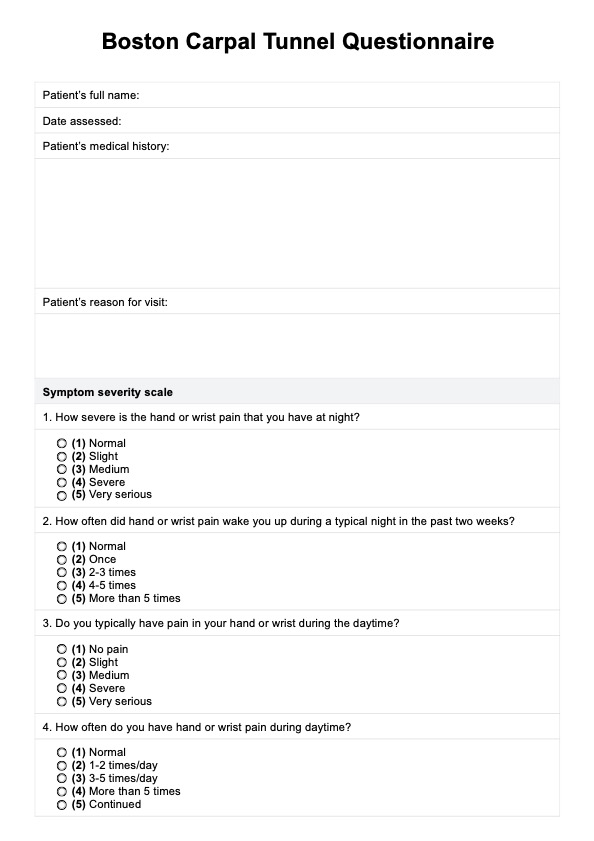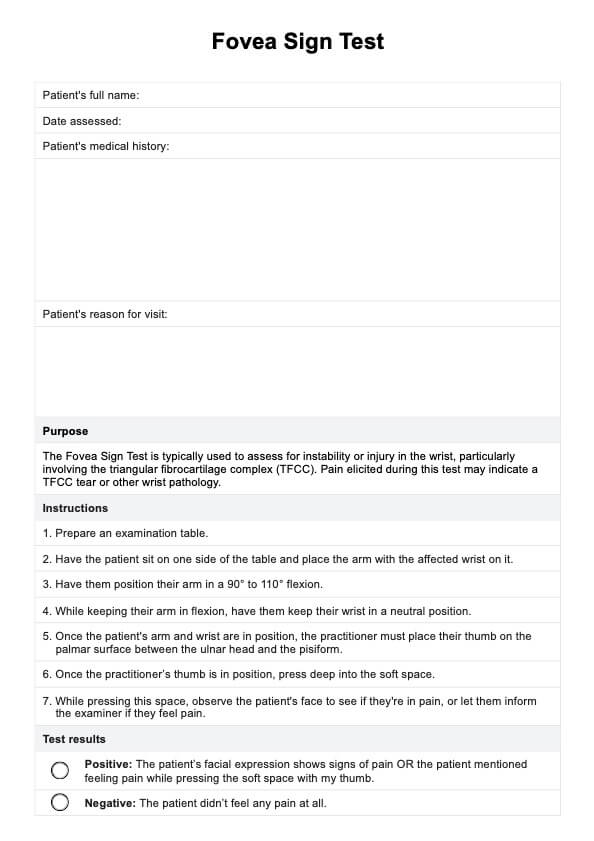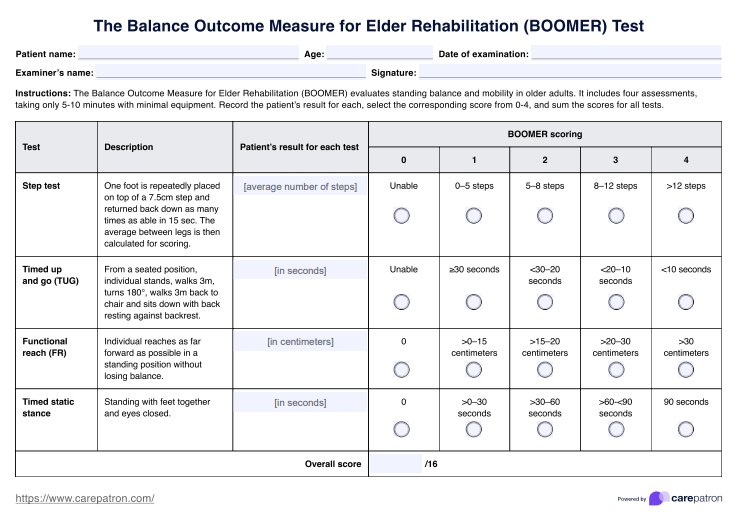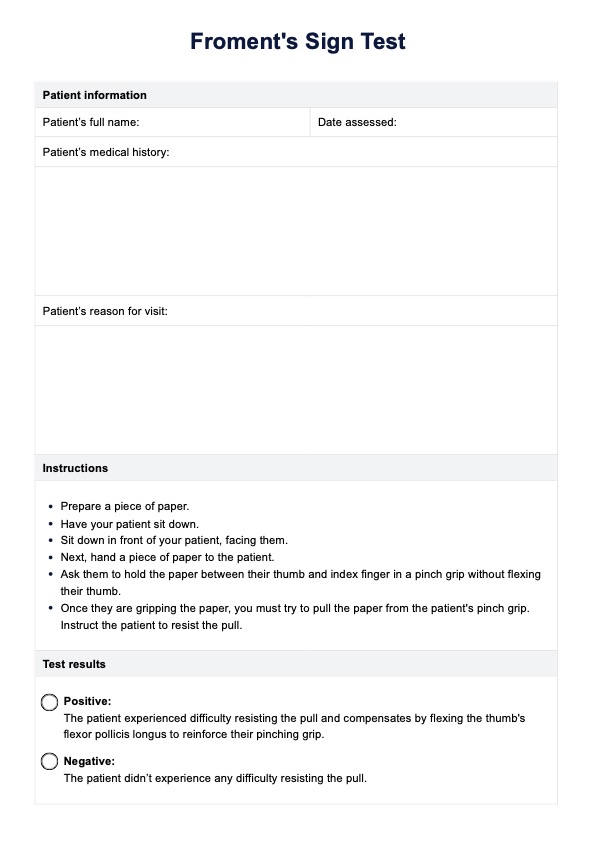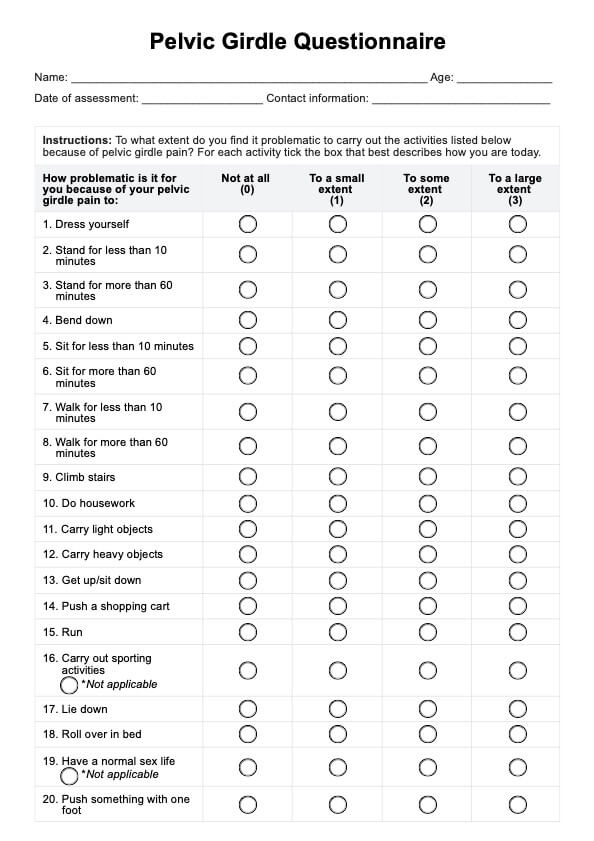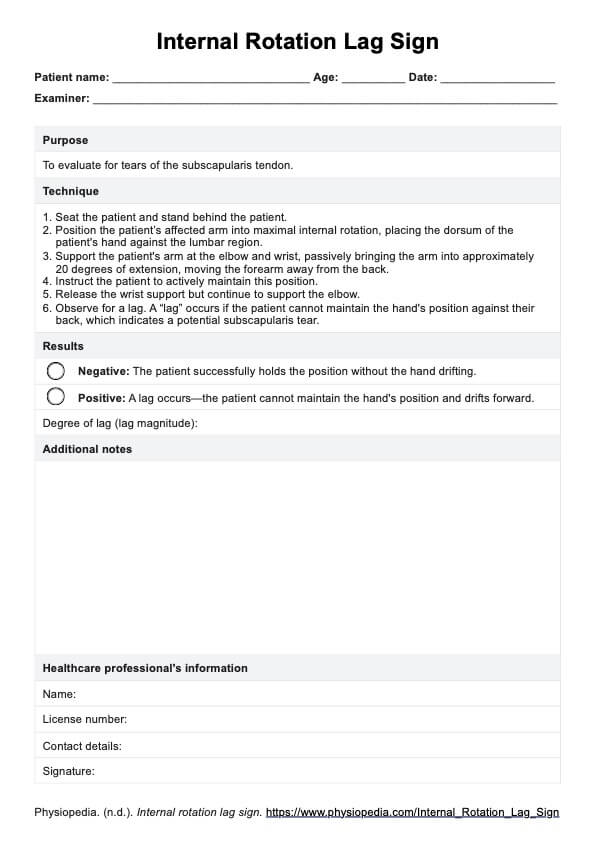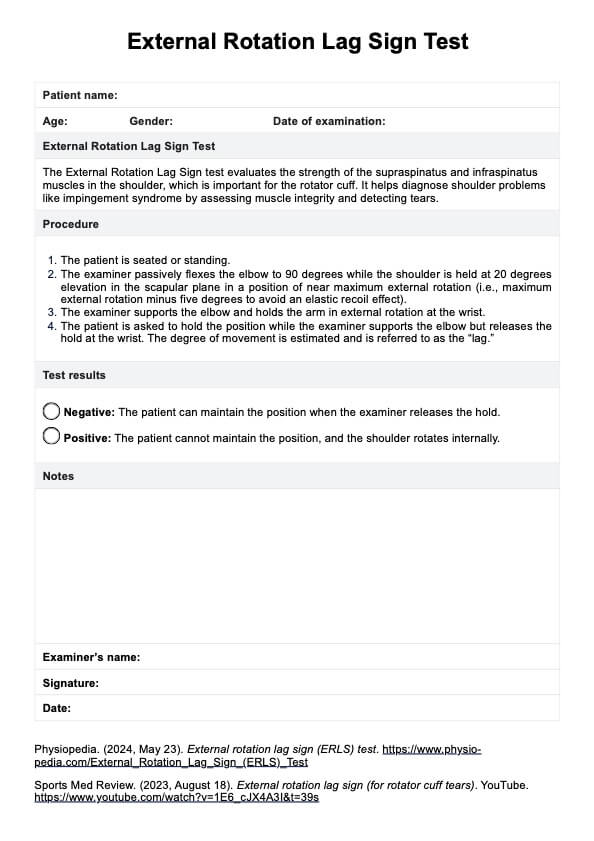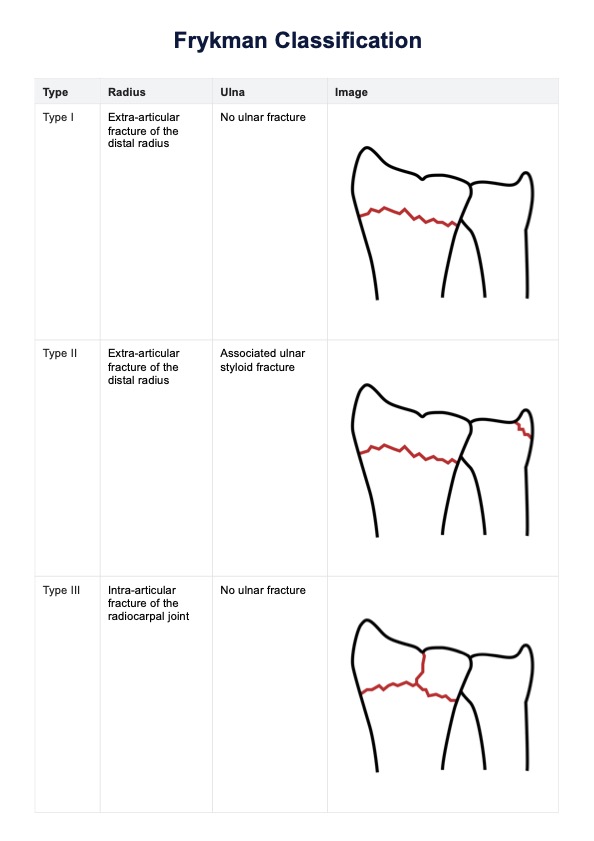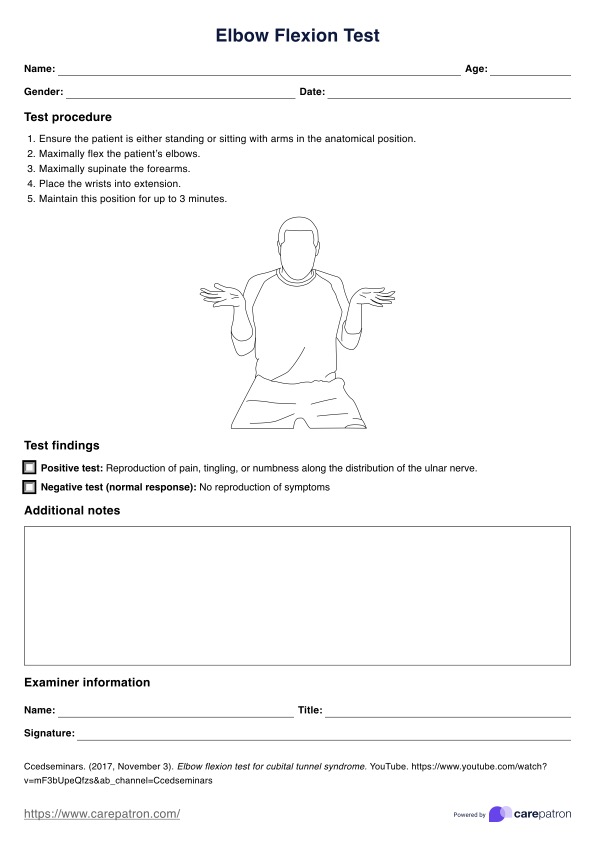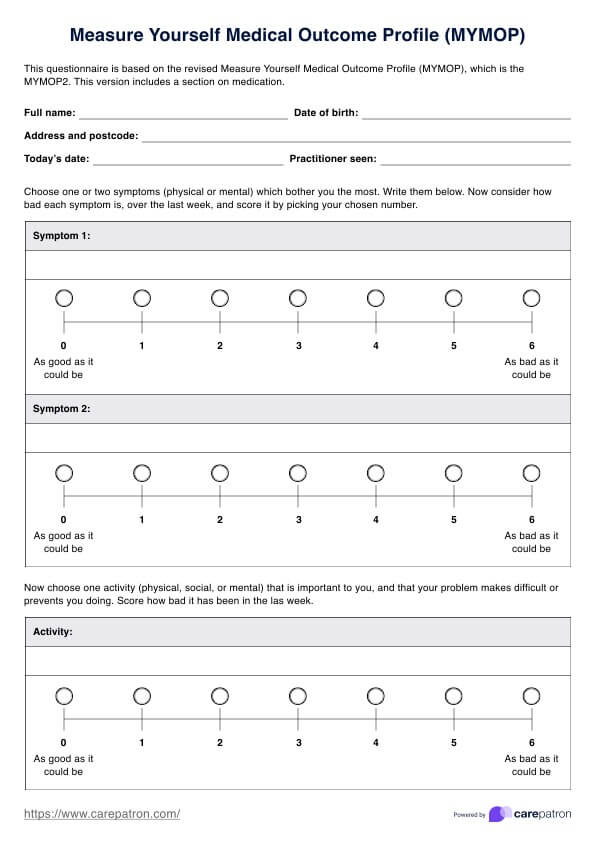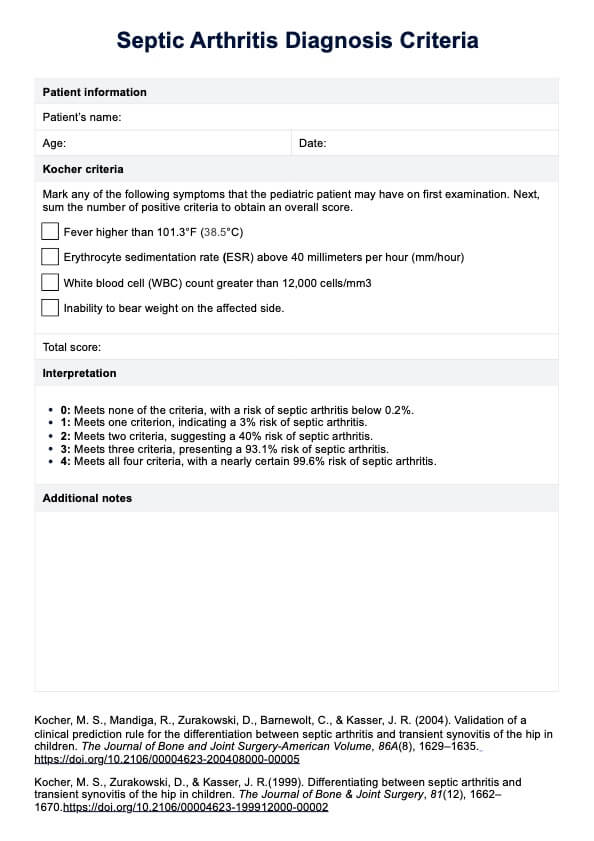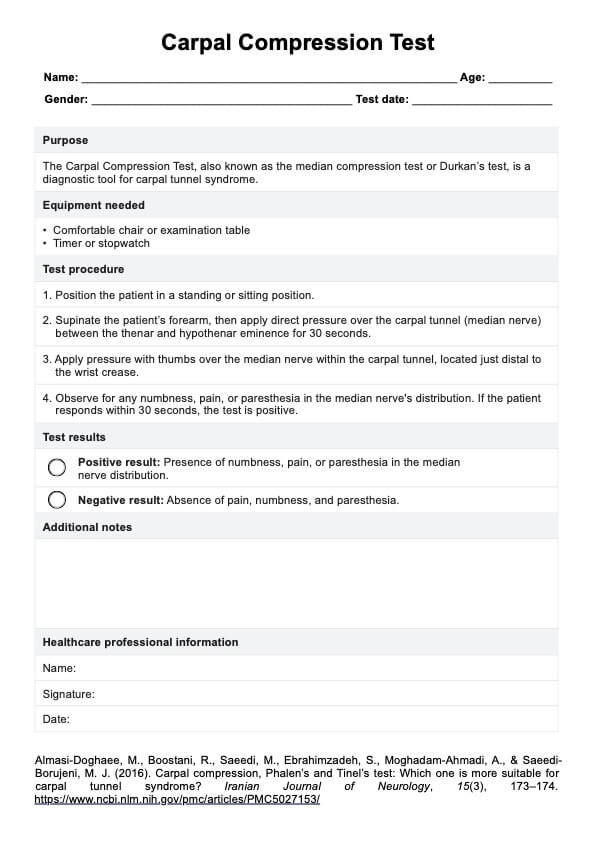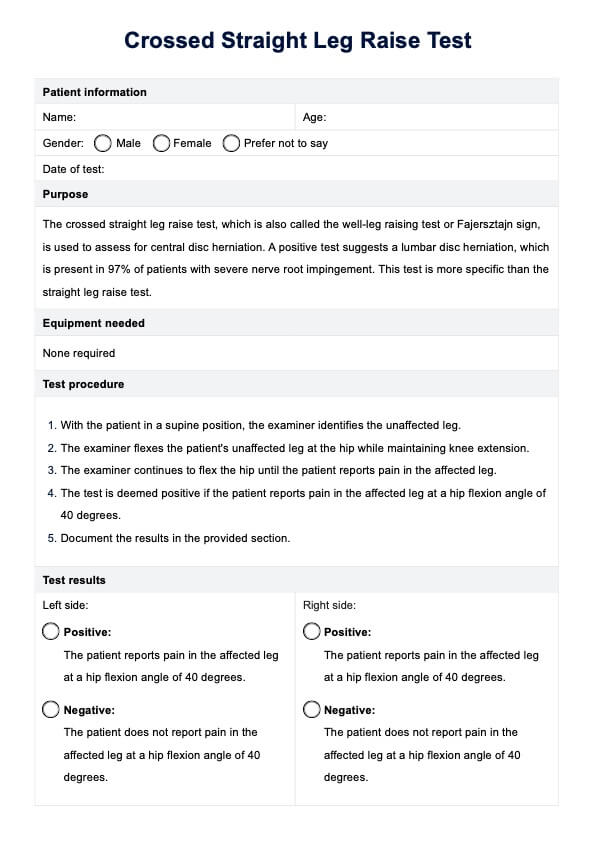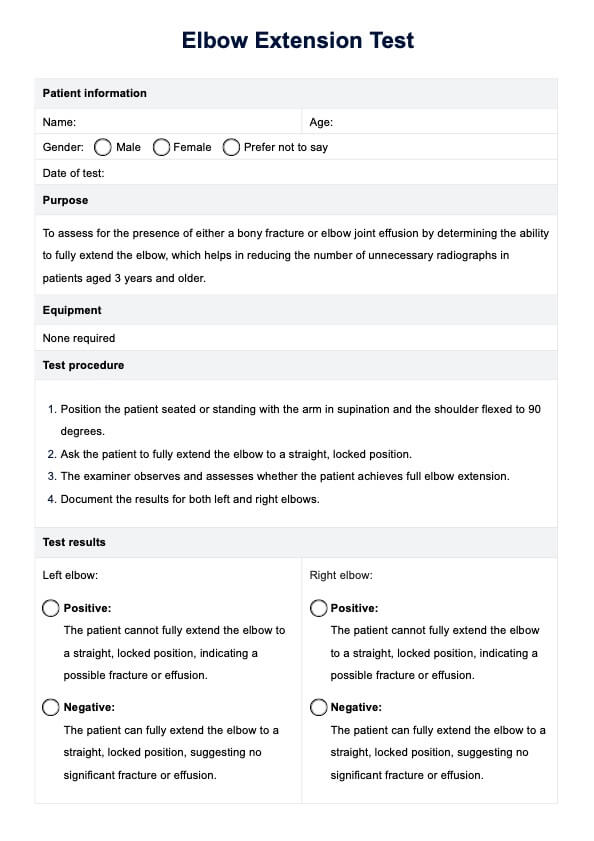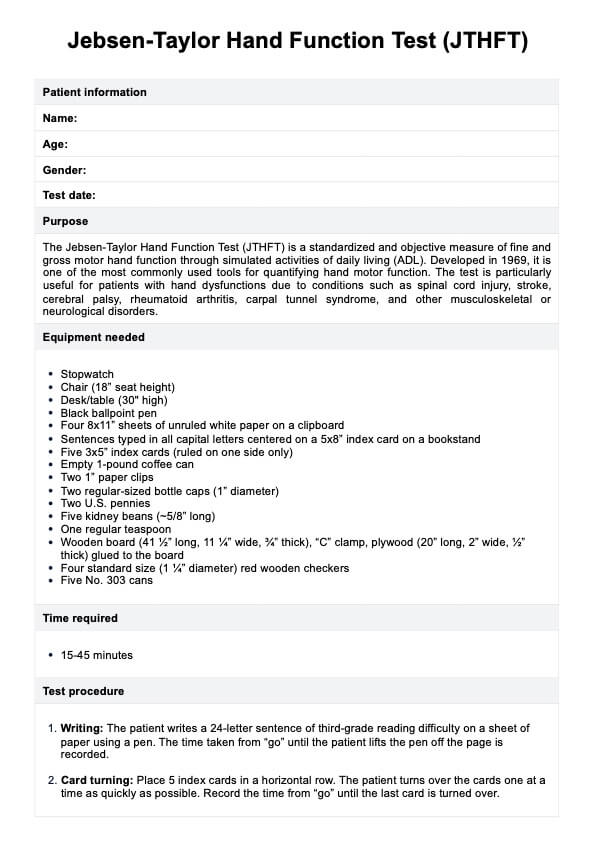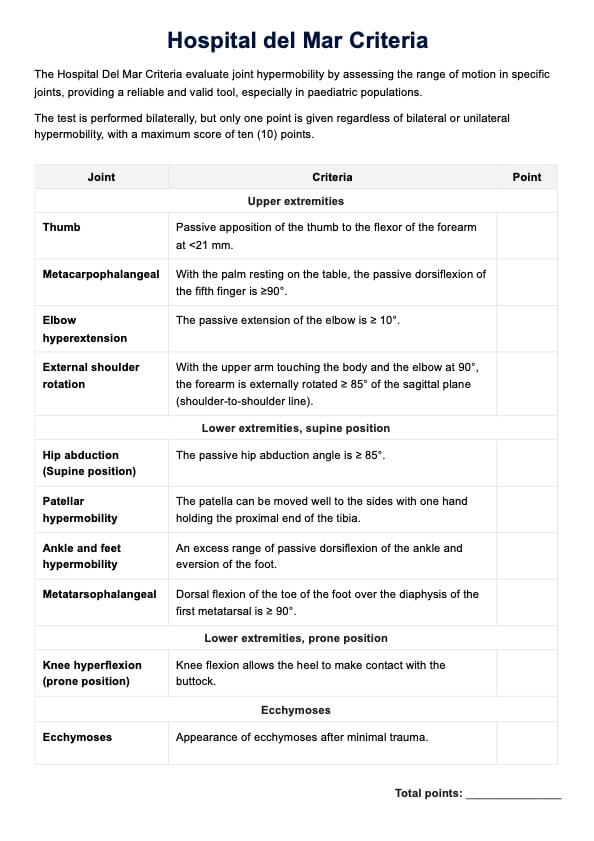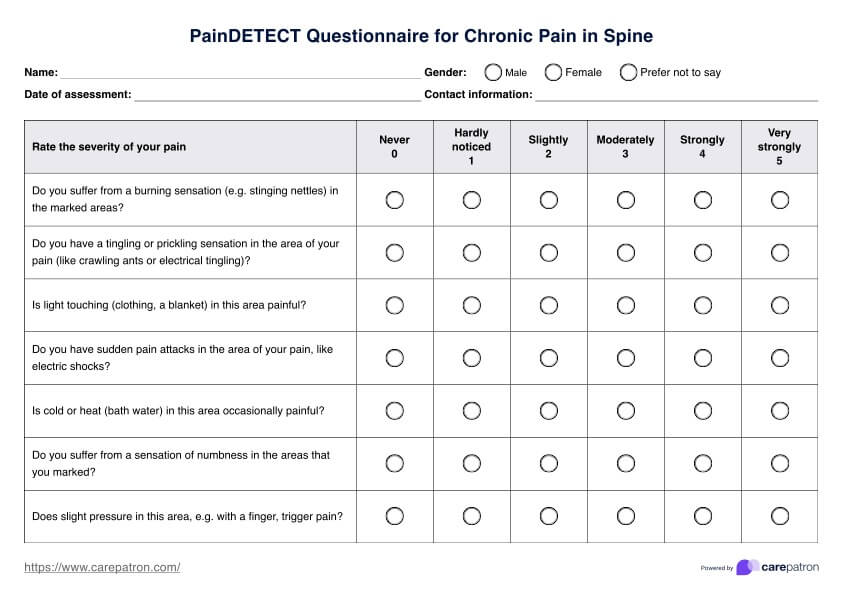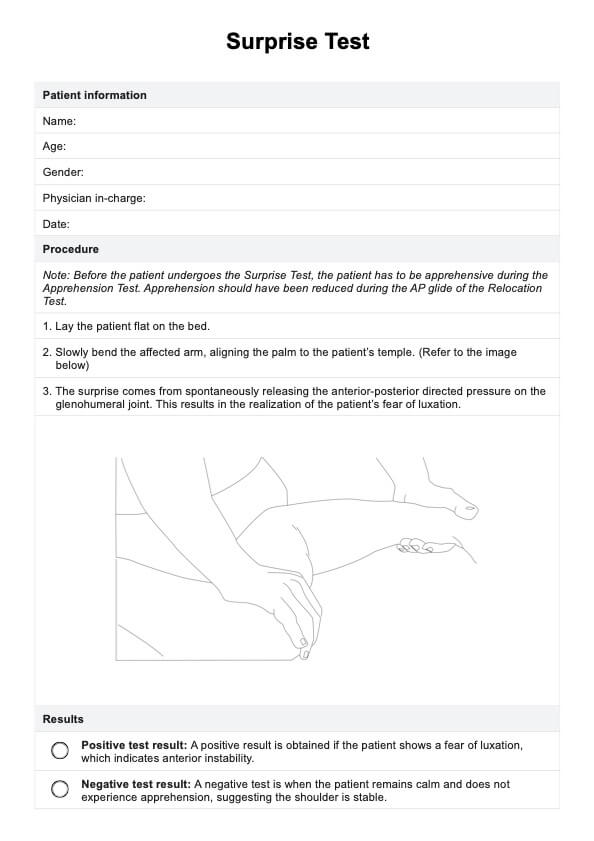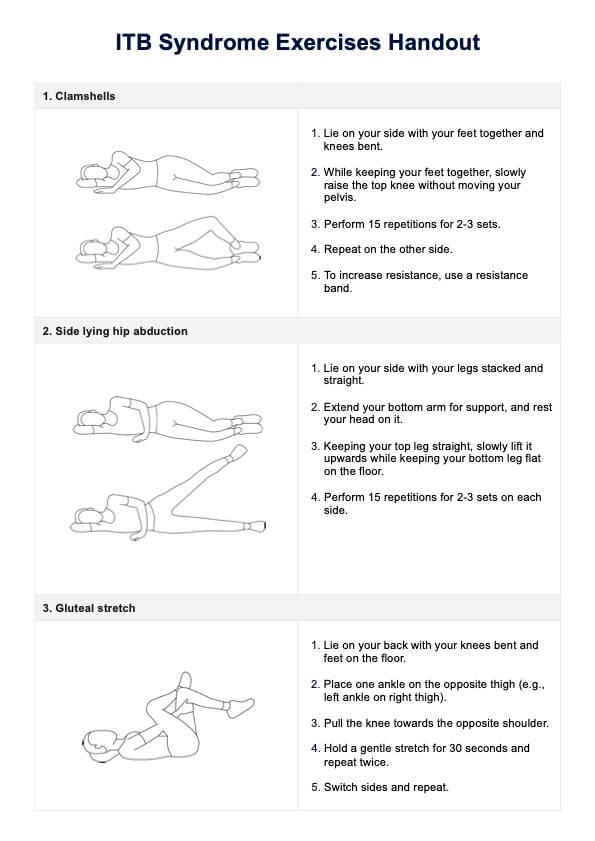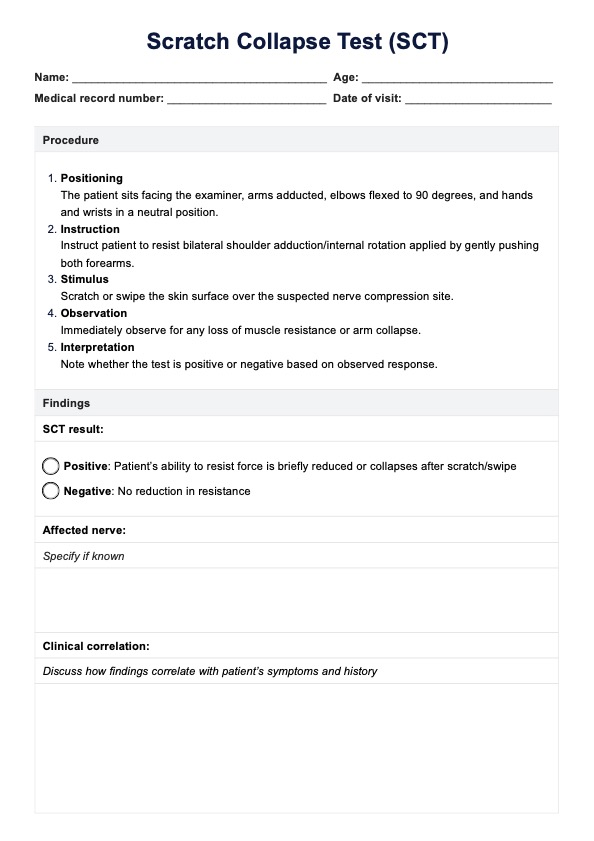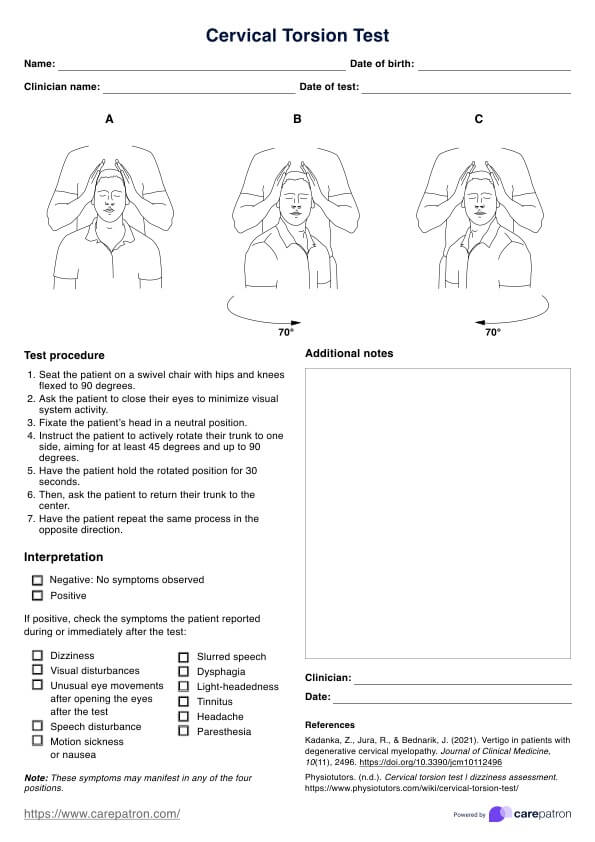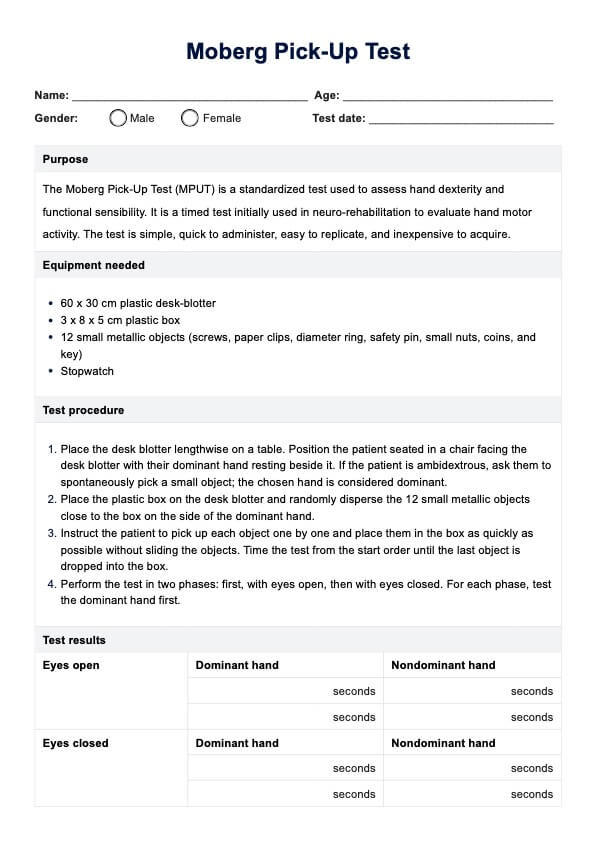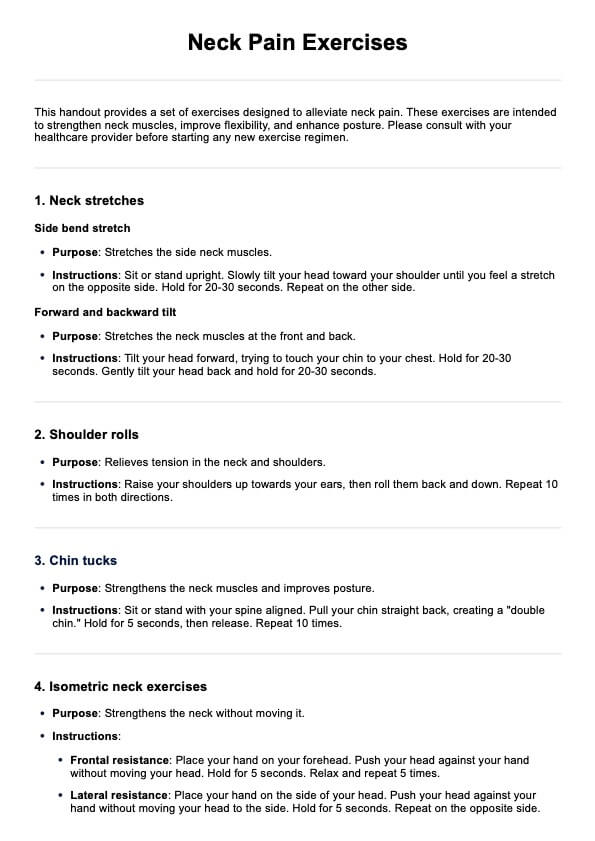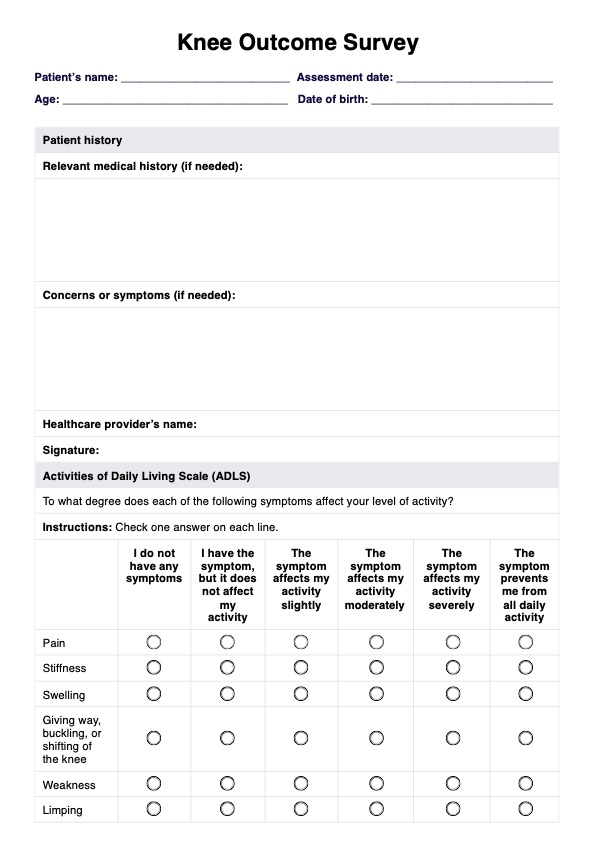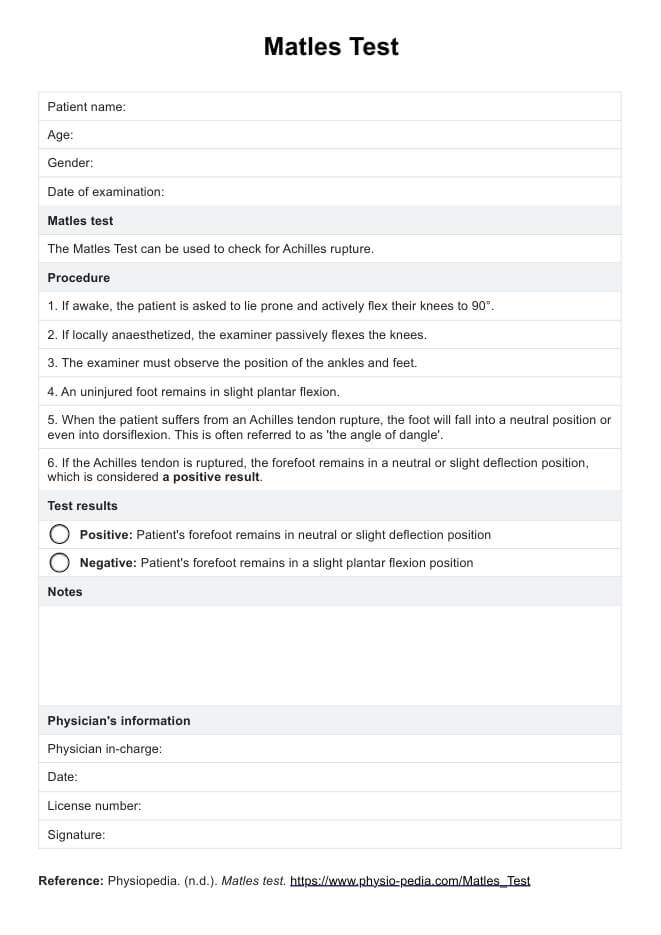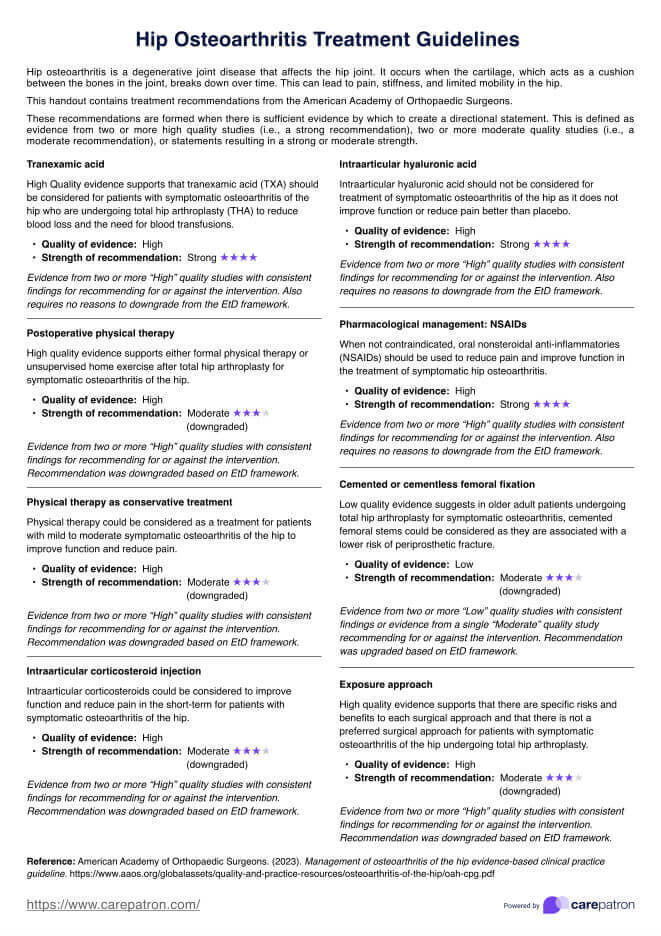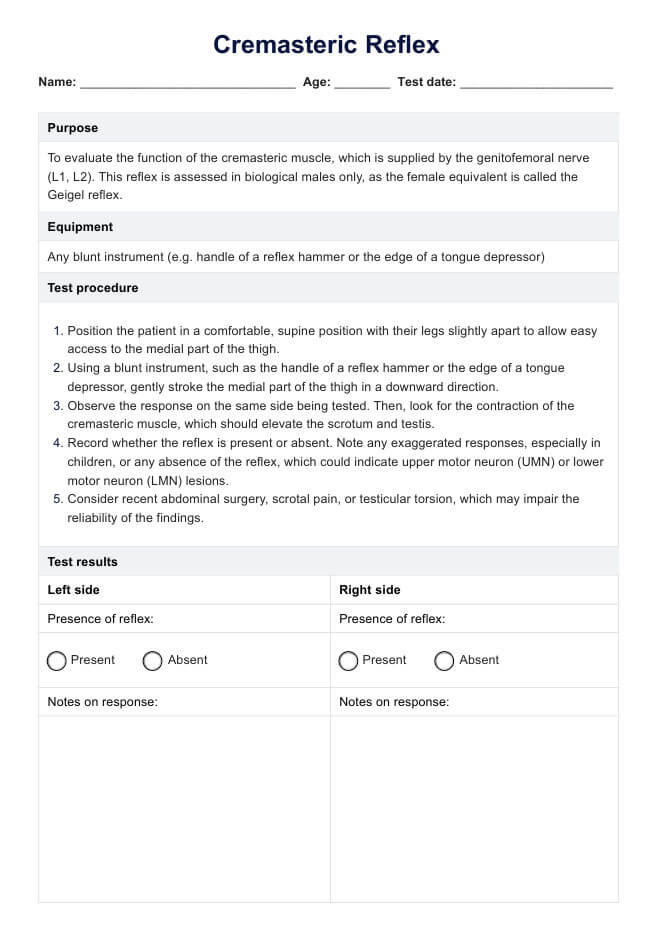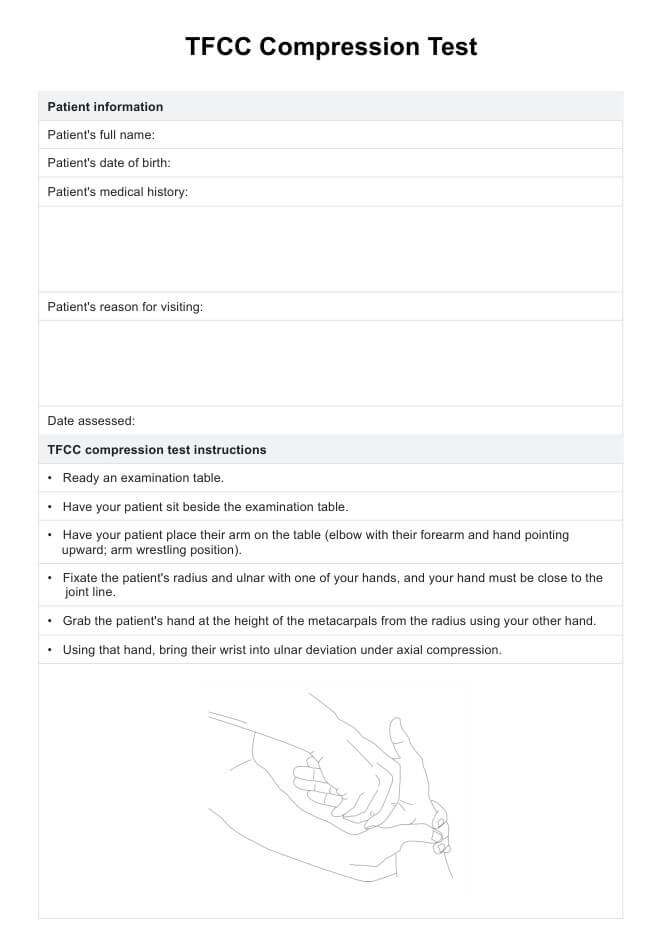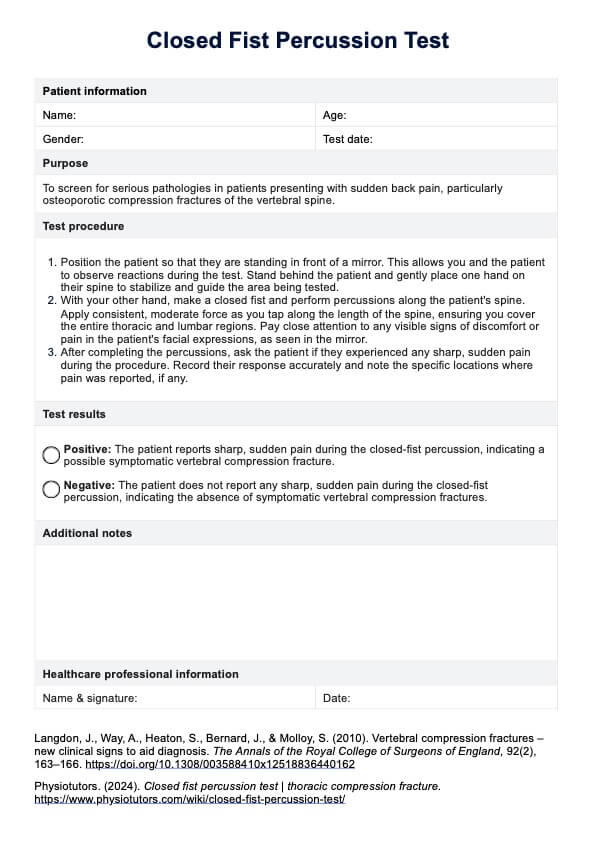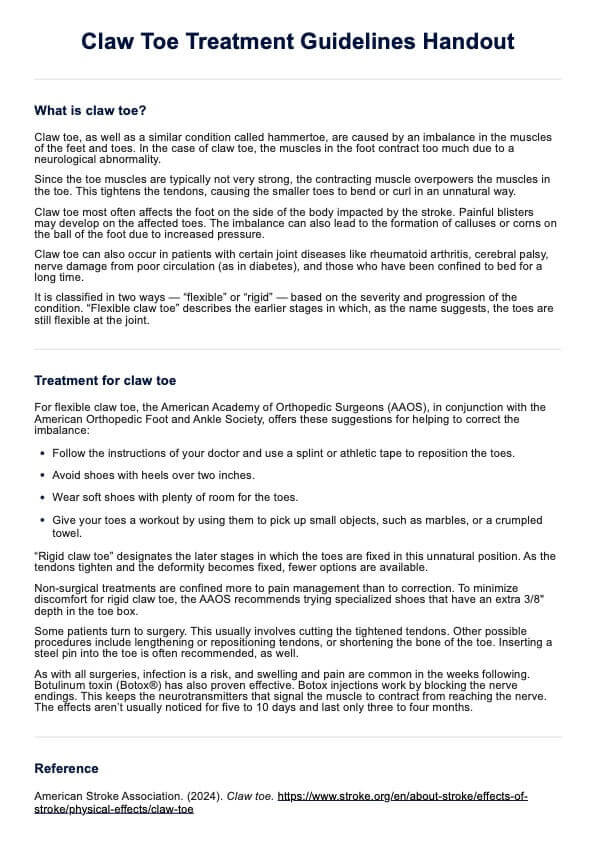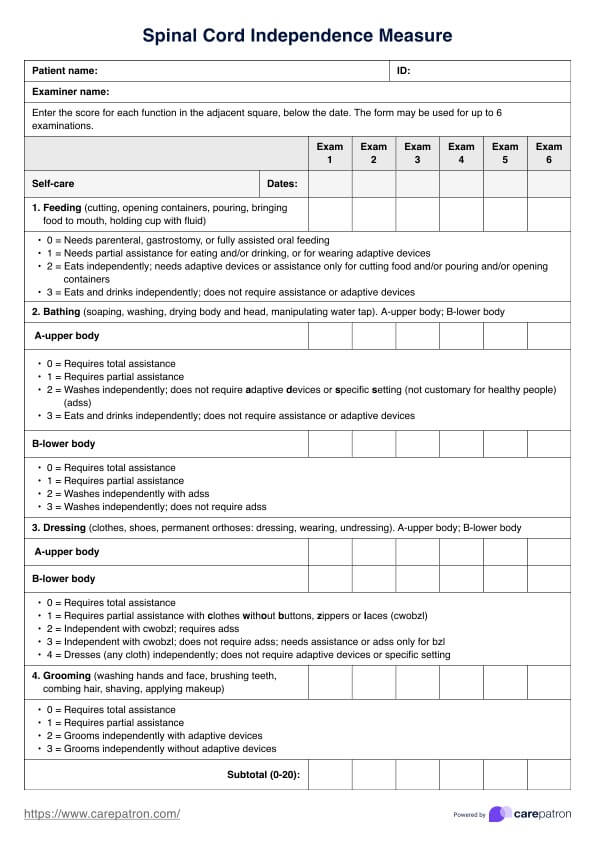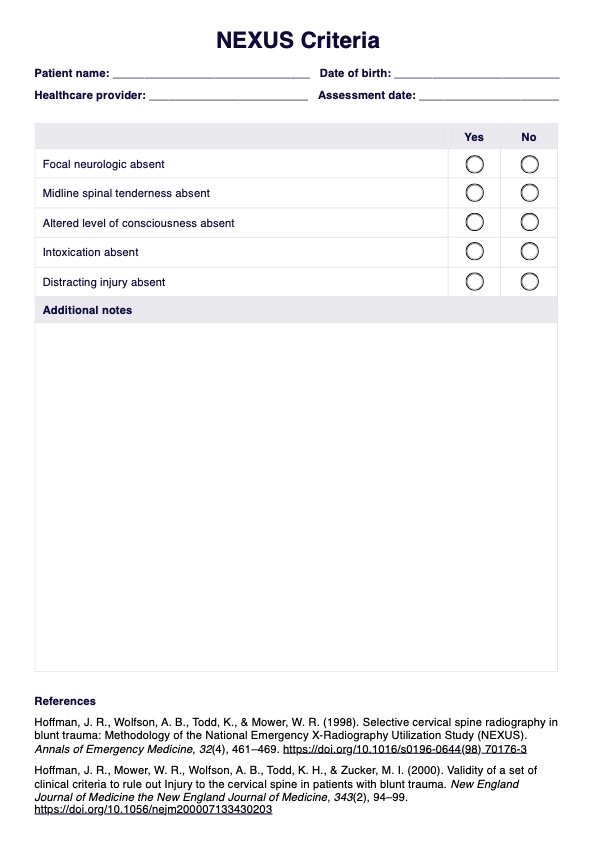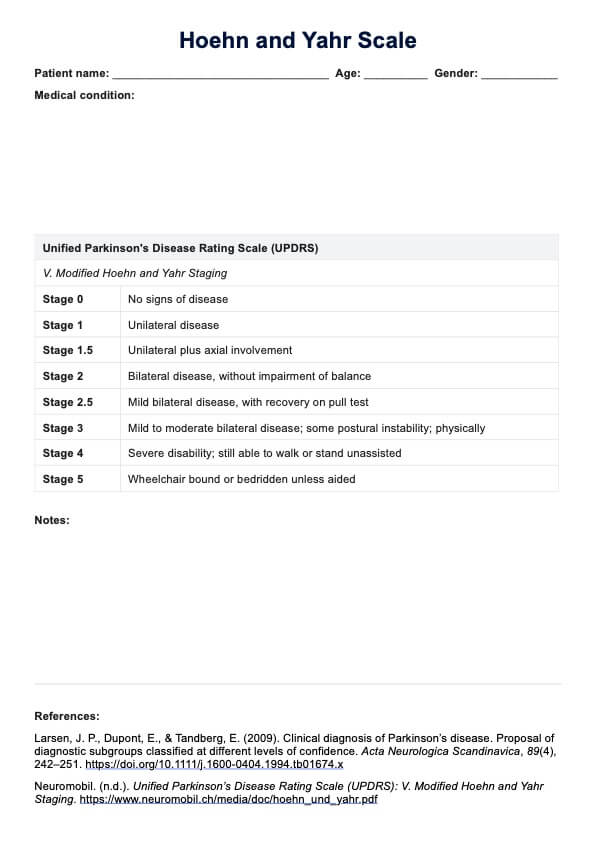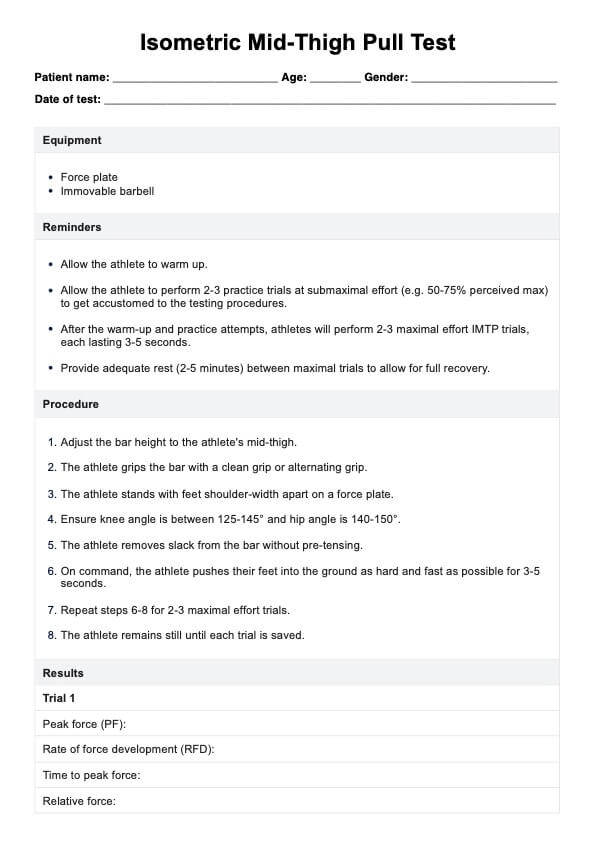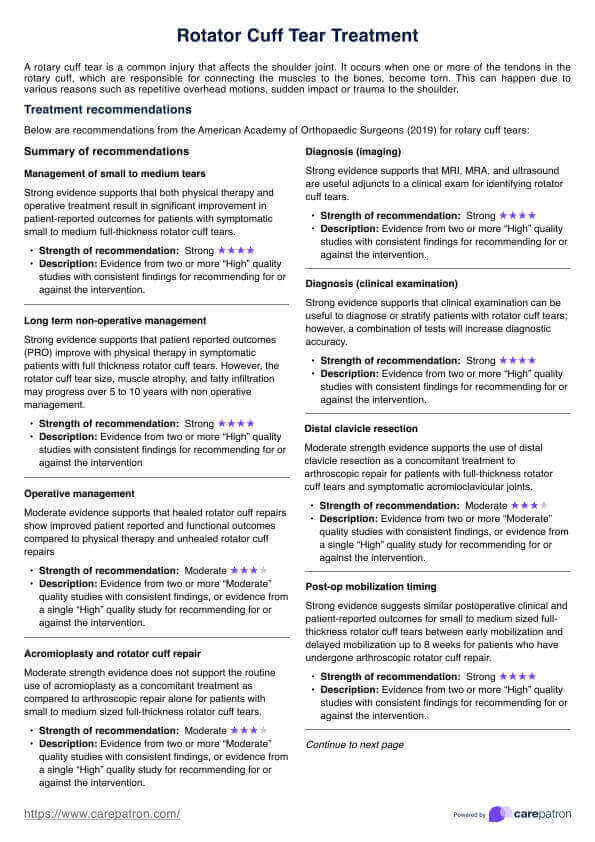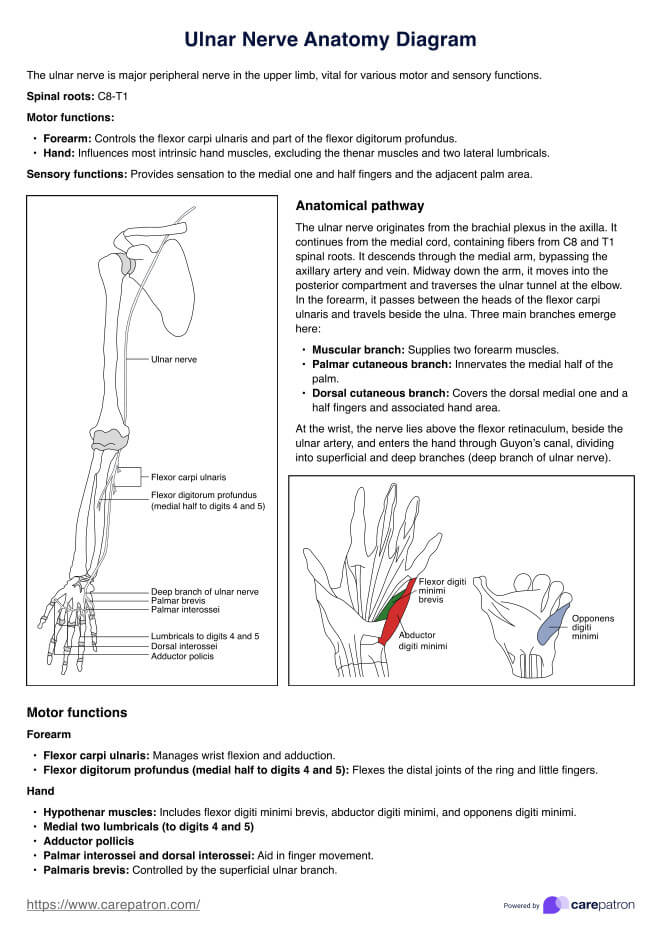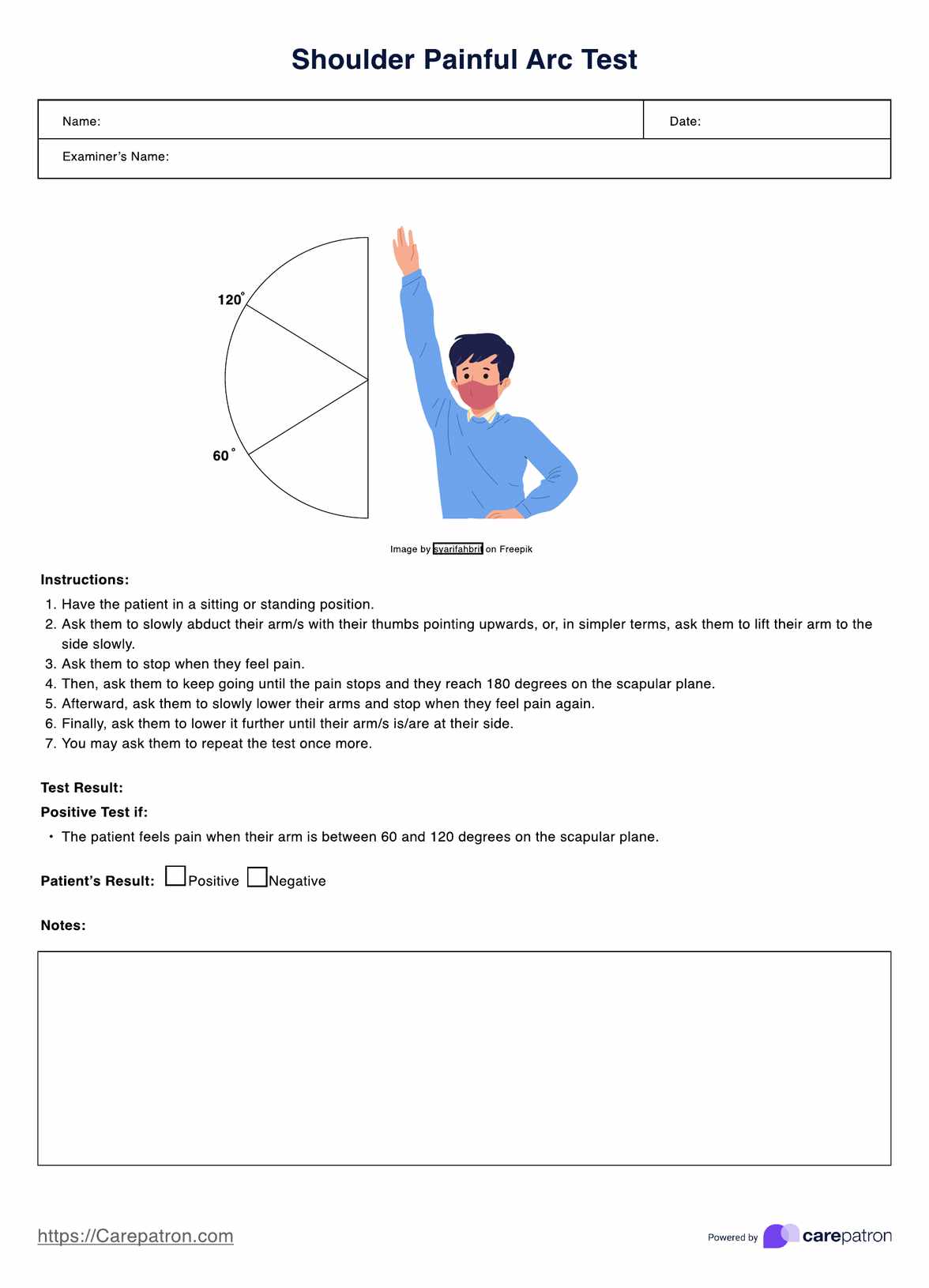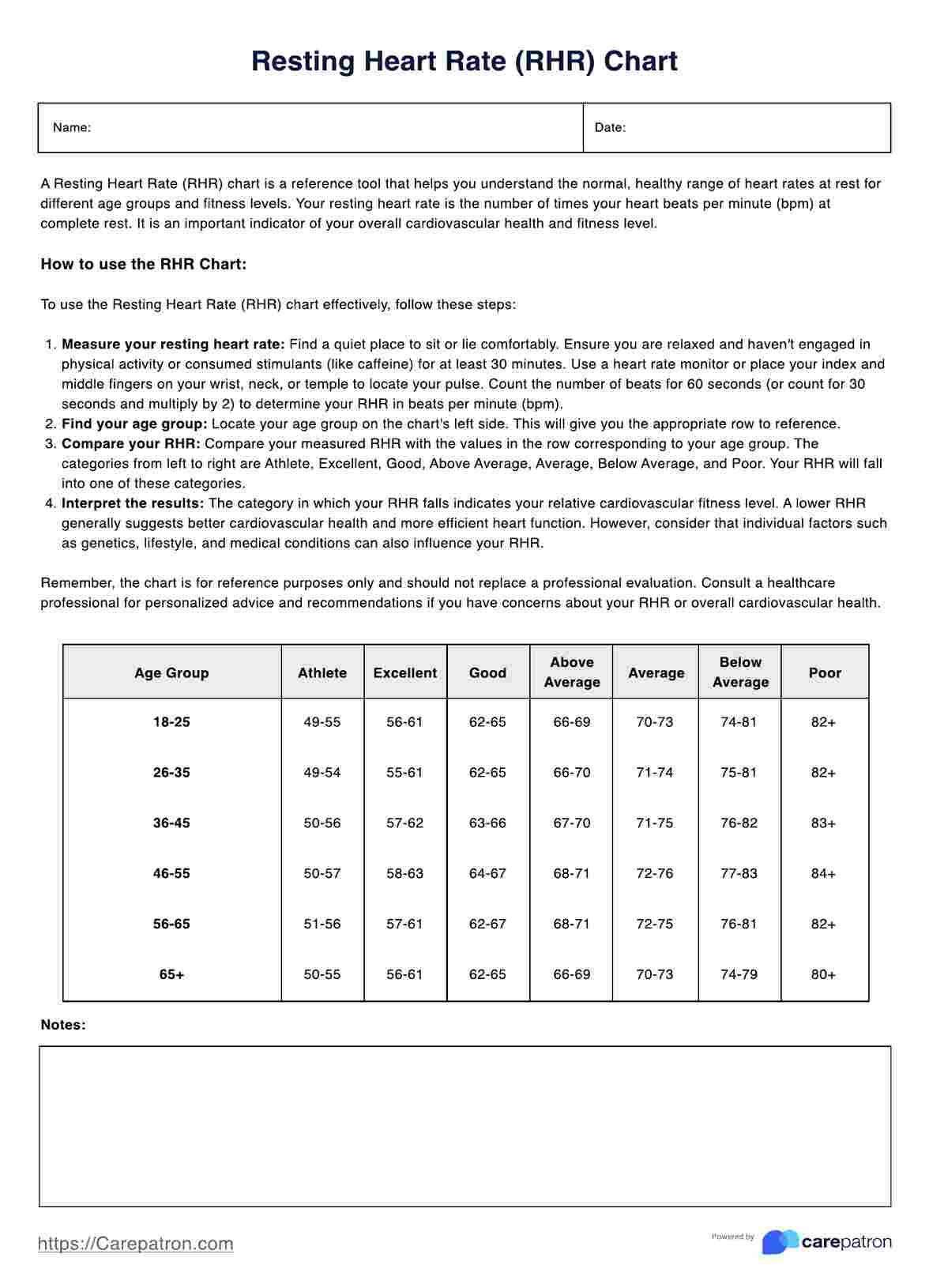Borg Scale
Use Carepatron's free Borg RPE Scale PDF with an example to support patient assessments of perceived exertion and guide exercise intensity in clinical practice.


What is the Borg Rating of Perceived Exertion (RPE) Scale?
The Borg Rating of Perceived Exertion (RPE) Scale is a standardized tool to measure an individual's perceived exertion level during physical activity (HeartOnline, 2014). Developed by Swedish psychologist Gunnar Borg (2017), the Borg Scale helps quantify the intensity of effort based on how hard the individual feels working rather than relying solely on physiological data. It is extensively used in sports science, rehabilitation, physical medicine, and occupational medicine to assess exercise intensity and physical stress.
There are two main types of perceived exertion scales: the Borg RPE Scale (6–20) and the Borg CR-10 Scale (0–10). The Borg RPE Scale is widely recognized for its correlation with heart rate—multiplying the RPE by 10 gives an approximate beats-per-minute value for healthy individuals. This makes it particularly effective in cardio training and progressive treadmill exercise tests, where close intensity monitoring is needed without invasive measurements. The Borg CR-10 Scale, on the other hand, is often used in clinical groups to assess localized symptoms such as chest pain, breathing rate, or muscle fatigue. The scale also measures office exercise training (Shariat et al., 2018).
In clinical practice, the Borg Scale is used to gauge subjective responses to physical exertion (Noble, 1982), especially when monitoring patients in cardiopulmonary rehabilitation or physical therapy or when heart rate monitoring is not feasible. It allows healthcare providers to tailor exercise prescriptions based on how patients perceive physical stress rather than relying solely on external metrics. This is particularly useful in different clinical groups, including those with cardiovascular disease, pulmonary conditions, and musculoskeletal disorders.
The rating of perceived exertion also has strong criterion validity in both research and clinical environments (Lea et al., 2022), making it a reliable component in evaluating exercise intensity across various populations. It is also used during progressive treadmill exercise testing to monitor changes in perceived exertion levels related to muscle pain, breathing rate, and physical fatigue. The Borg Scale supports flexible assessment across environments because perceived exertion may differ between indoor and outdoor exercise settings. Overall, the Borg RPE Scale is a valuable tool for healthcare professionals aiming to safely and accurately monitor and adjust physical activity and training programs.
Borg Scale Template
Borg Scale Example
How does it work?
Using the Borg RPE Scale effectively involves more than just assigning a number—it requires clinical judgment, communication, and interpretation. Carepatron’s Borg RPE Scale template is designed to streamline this process, helping practitioners capture real-time exertion data and integrate it directly into the patient’s care plan.
Step 1: Access the Borg Scale template
Click the “Use template” button to open the Borg RPE Scale directly within Carepatron. This action will launch or prompt the download of the Carepatron app, where the template is pre-formatted and ready for immediate use. There’s no setup required—just click and start assessing.
Step 2: Use the scale in patient assessment
Have the patient report their exertion level during physical activity or rehabilitation using the Borg Scale provided. This step helps capture subjective responses related to breathing rate, muscle fatigue, chest pain, or maximum effort—key indicators for monitoring physical stress and guiding exercise intensity.
Step 3: Explain how the scale works to patient
Briefly orient the patient to the scale. Emphasize that it reflects their own perception of effort, not objective metrics. When selecting a number, encourage them to focus on how their body feels—muscle pain, breathlessness, or fatigue. Clarity at this stage ensures valid and consistent input during assessment.
Step 4: Gather and interpret results
Document the chosen rating in the provided text field. Then, interpret the number based on the exertion zones within the template. For example, an RPE of 13 indicates “somewhat hard,” typically appropriate for moderate-intensity cardio training. Use this data to adjust exercise prescriptions or monitor progress over time.
Step 5: Provide patient education and next steps
Based on the results, guide the patient on appropriate next steps—adjusting their physical activity intensity, taking rest, or seeking further evaluation. Use the Borg Scale as a reference point in patient education to promote awareness of exertion and support self-monitoring between clinical visits.
Benefits of using this scale
The Borg RPE Scale offers several practical advantages for medical professionals in clinical, rehabilitation, and sports medicine settings. One of the primary benefits is its strong criterion-related validity—Borg ratings closely correlate with actual heart rate values, enabling professionals to estimate training heart rate without relying on monitoring equipment. This simplifies assessment in environments where devices may be unavailable or impractical. The scale also allows consistent tracking of intensity levels across different sessions and populations, making it ideal for evaluating progress in rehabilitation or structured workout programs.
By using RPE scales, practitioners can tailor treatment plans more accurately, adjusting physical activity based on patient feedback rather than relying solely on objective metrics. This is especially helpful when working with populations where heart rate data may be unreliable due to medication or underlying conditions. Borg’s rating applies to nearly any specific area of physical exertion, allowing for targeted measurement of fatigue, breathlessness, or localized discomfort.
Results and interpretation
The Borg RPE Scale (6–20) is scored based on a patient’s perceived level of exertion during physical activity. Ratings range from 6 (no exertion) to 20 (maximum exertion). To approximate heart rate, multiply the RPE by 10 (e.g., RPE 15 ≈ 150 bpm). Scores from 8–14 indicate light to moderate intensity, suitable for endurance and general fitness.
Scores from 15–18 reflect hard to very hard intensity, common in strength or high-intensity workouts. Scores of 19–20 represent maximum effort. This scale is especially useful when heart rate monitoring is unreliable, offering clinicians a practical, subjective assessment tool.
References
Borg, G. (2017). Borg RPE Scale®. https://www.bhf.org.uk/-/media/files/information-and-support/cardiac-rehab/rpescale.pdf?rev=ddd8679c1d21460396fea5ad290dd25d
HeartOnline. (2014). Rating of perceived exertion: Borg scales. https://www.sralab.org/sites/default/files/2018-04/Rating_of_perceived_exertion_-_Borg_scale.pdf
Lea, J. W. D., O’Driscoll, J. M., Hulbert, S., Scales, J., & Wiles, J. D. (2022). Convergent validity of ratings of perceived exertion during resistance exercise in healthy participants: A systematic review and meta-analysis. Sports Medicine - Open, 8(1), Article 3. https://doi.org/10.1186/s40798-021-00386-8
Noble, B. J. (1982). Clinical applications of perceived exertion. Medicine & Science in Sports & Exercise, 14(5), 406–411. https://doi.org/10.1249/00005768-198205000-00016
Shariat, A., Cleland, J. A., Danaee, M., Alizadeh, R., Sangelaji, B., Kargarfard, M., Ansari, N. N., Sepehr, F. H., & Tamrin, S. B. M. (2018). Borg CR-10 scale as a new approach to monitoring office exercise training. Work, 60(4), 549–554. https://doi.org/10.3233/WOR-182762
Commonly asked questions
The Borg Scale is a subjective tool used to measure an individual’s perceived exertion during physical activity. It helps quantify how hard a person feels working based on sensations like fatigue, breathlessness, and muscle strain.
Ask the patient to rate their effort using the numbered scale, considering physical sensations such as breathing rate, muscle fatigue, and overall exertion. The selected number reflects their perceived intensity during the activity.
The Rate of Perceived Exertion (RPE) scale measures a person's self-reported effort level during exercise. It captures internal responses to physical stress, including muscle fatigue, breathlessness, and total exertion.
To estimate heart rate using the Borg RPE Scale, multiply the RPE score by 10. For example, a healthy individual's RPE of 13 corresponds to approximately 130 beats per minute.



